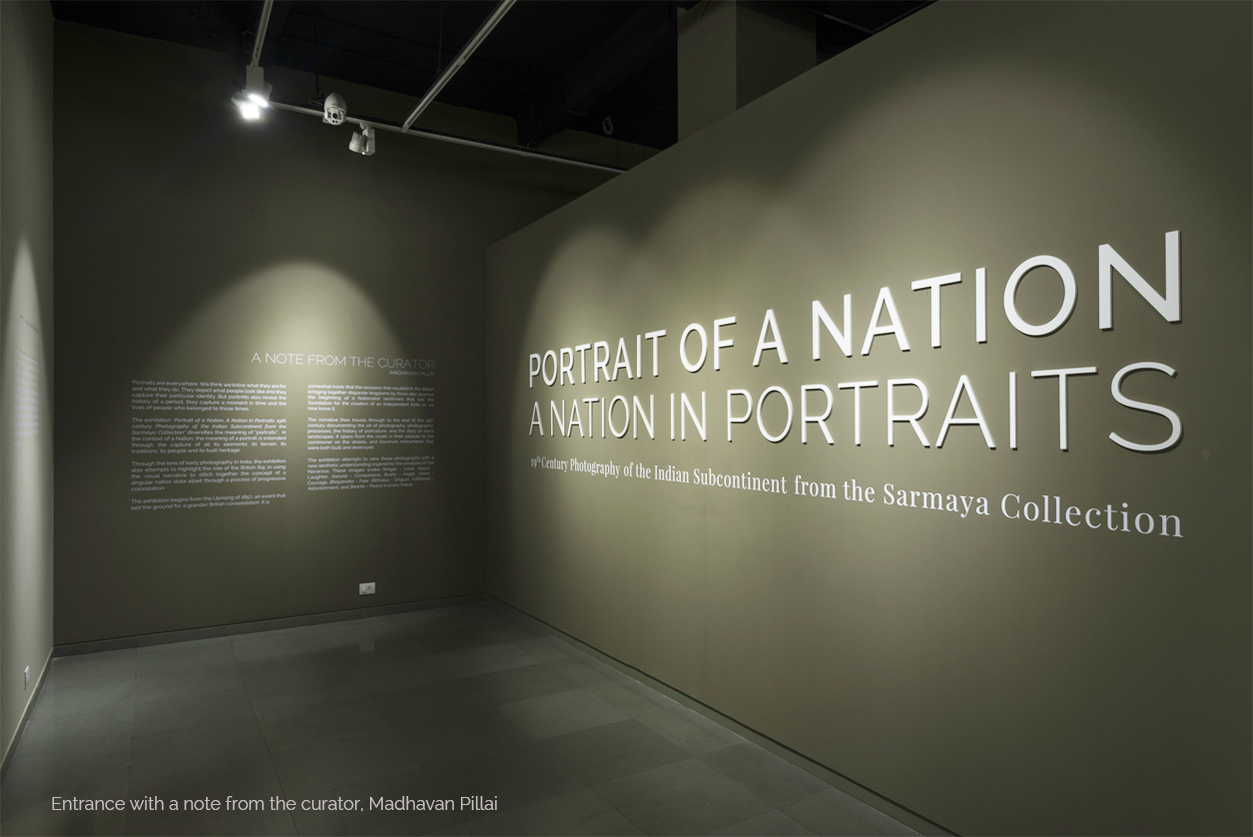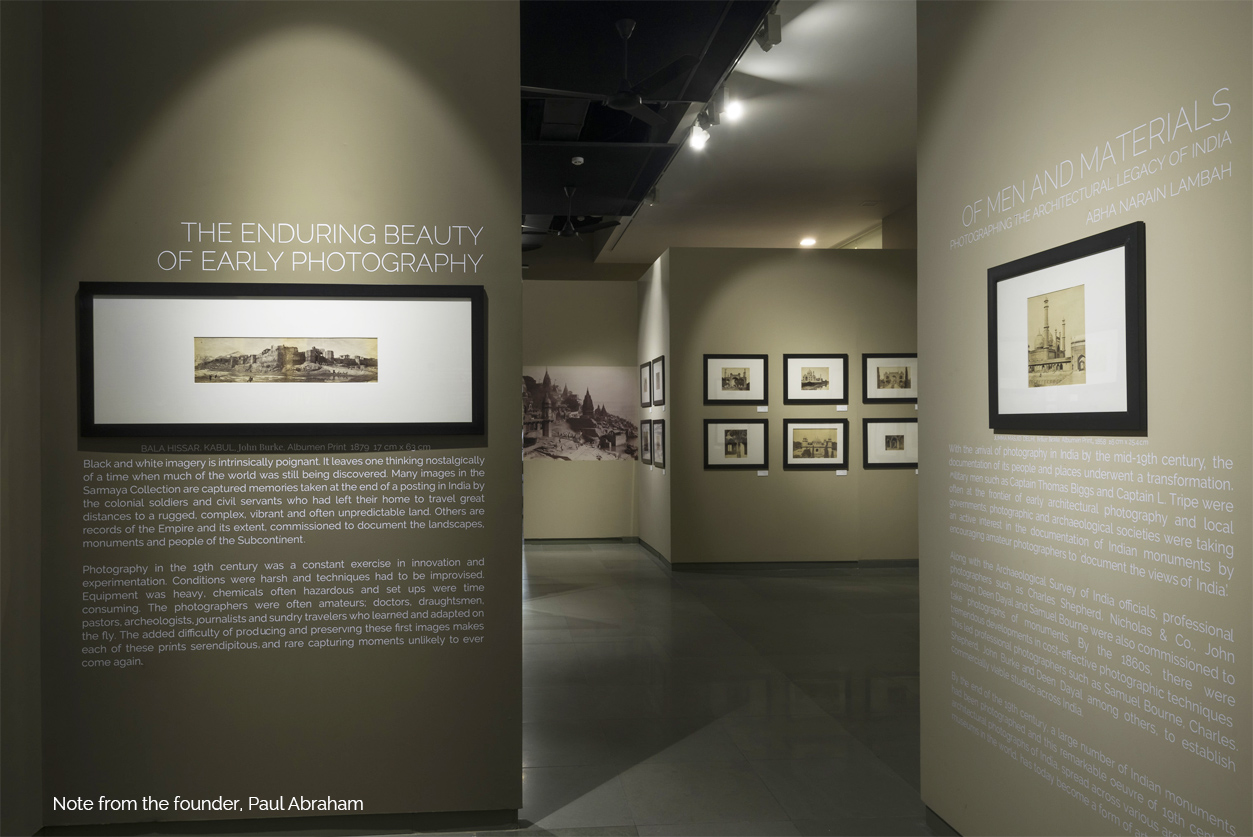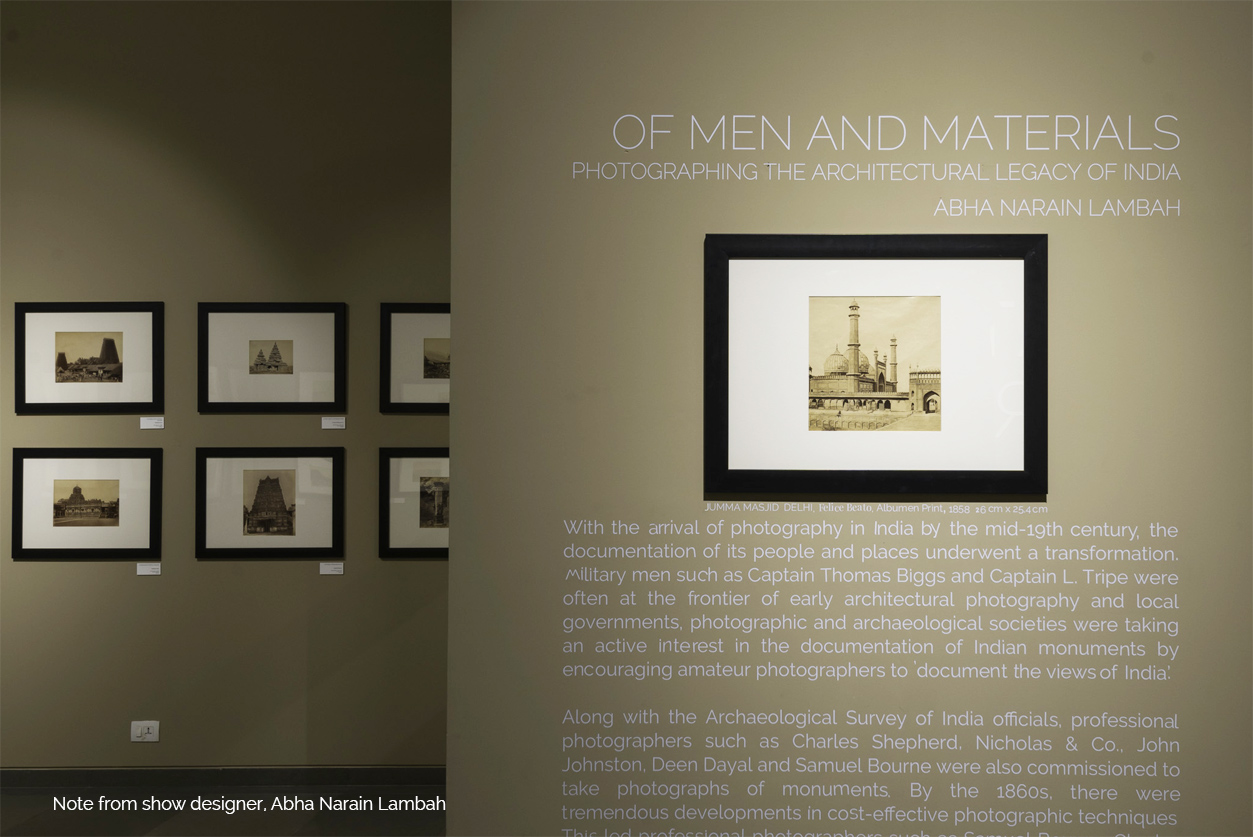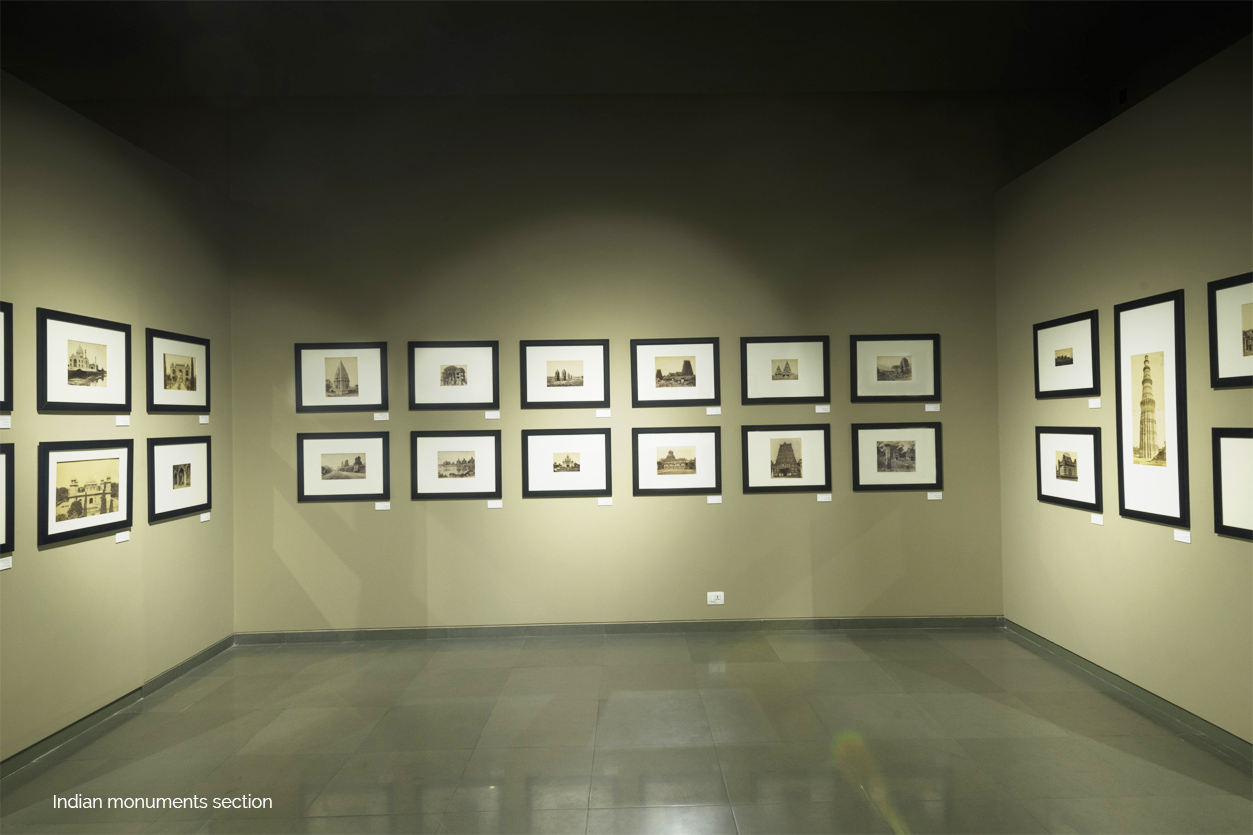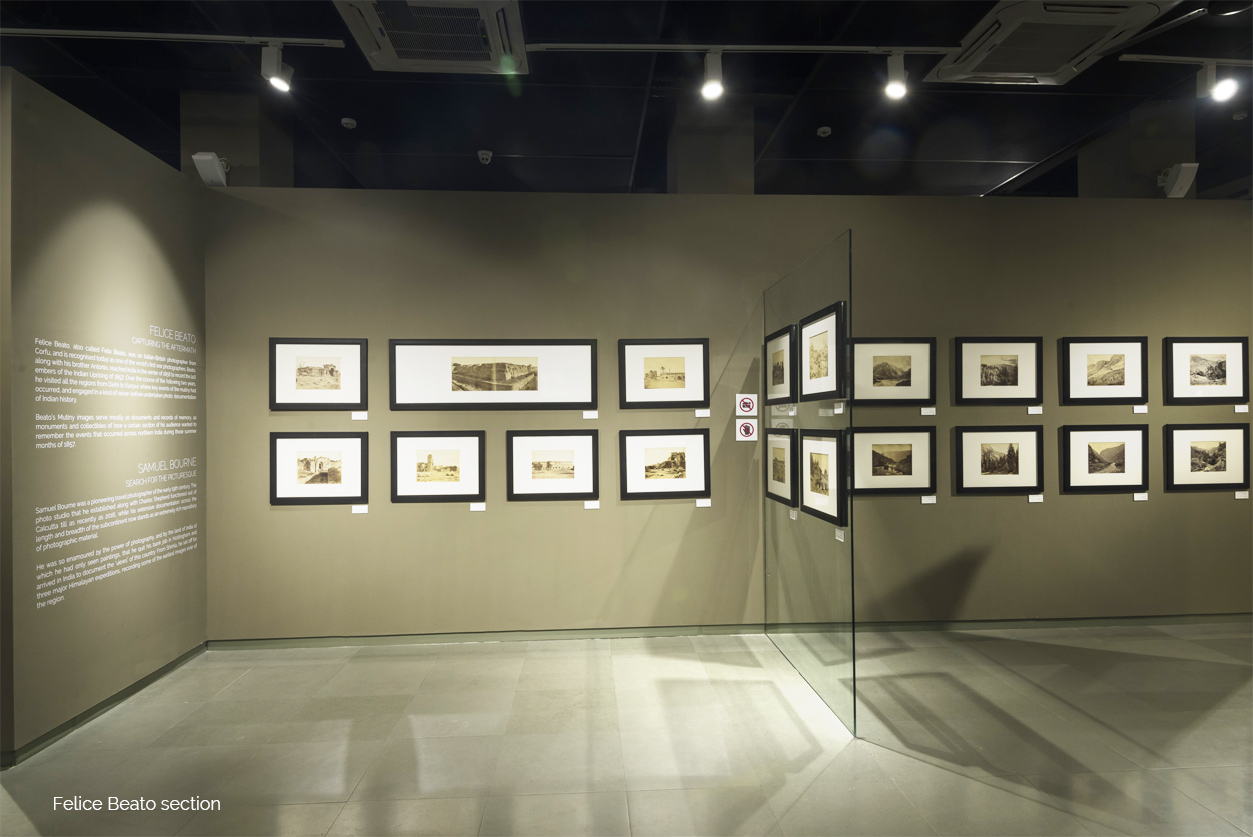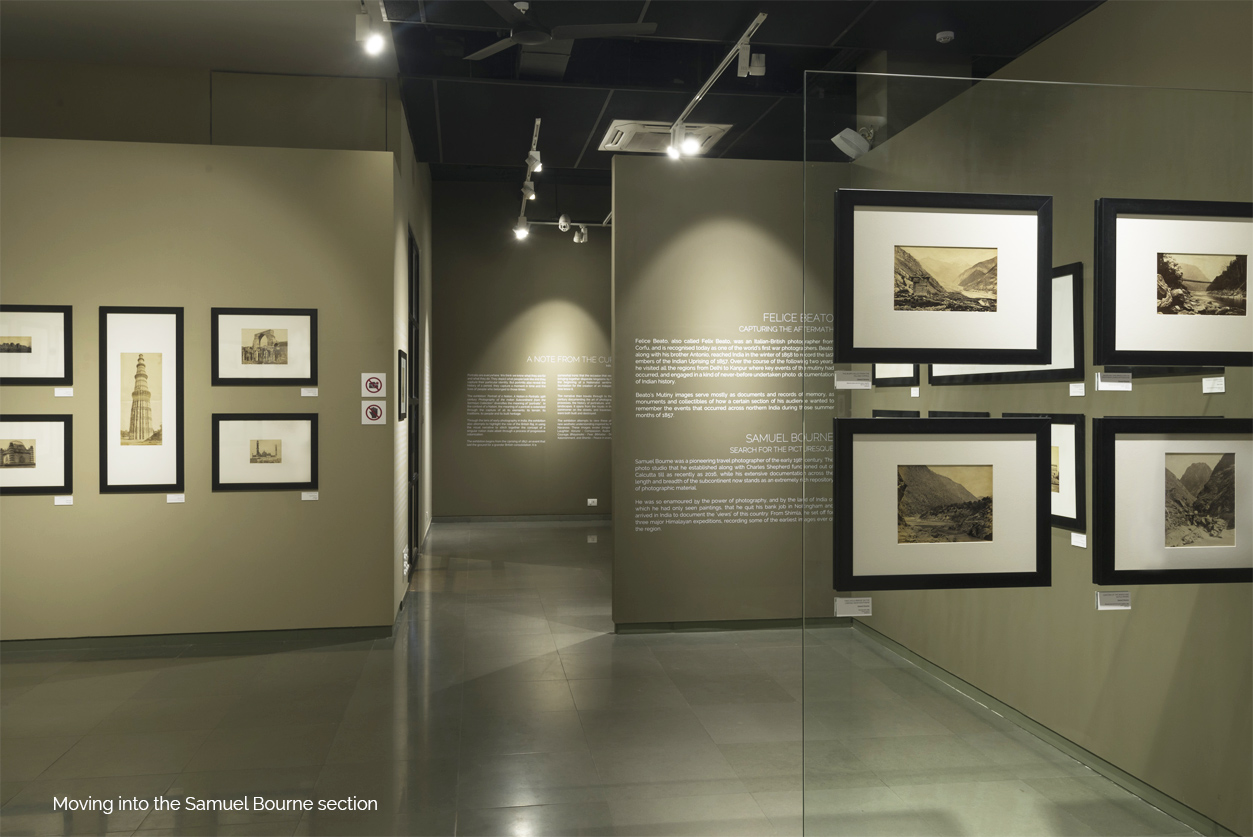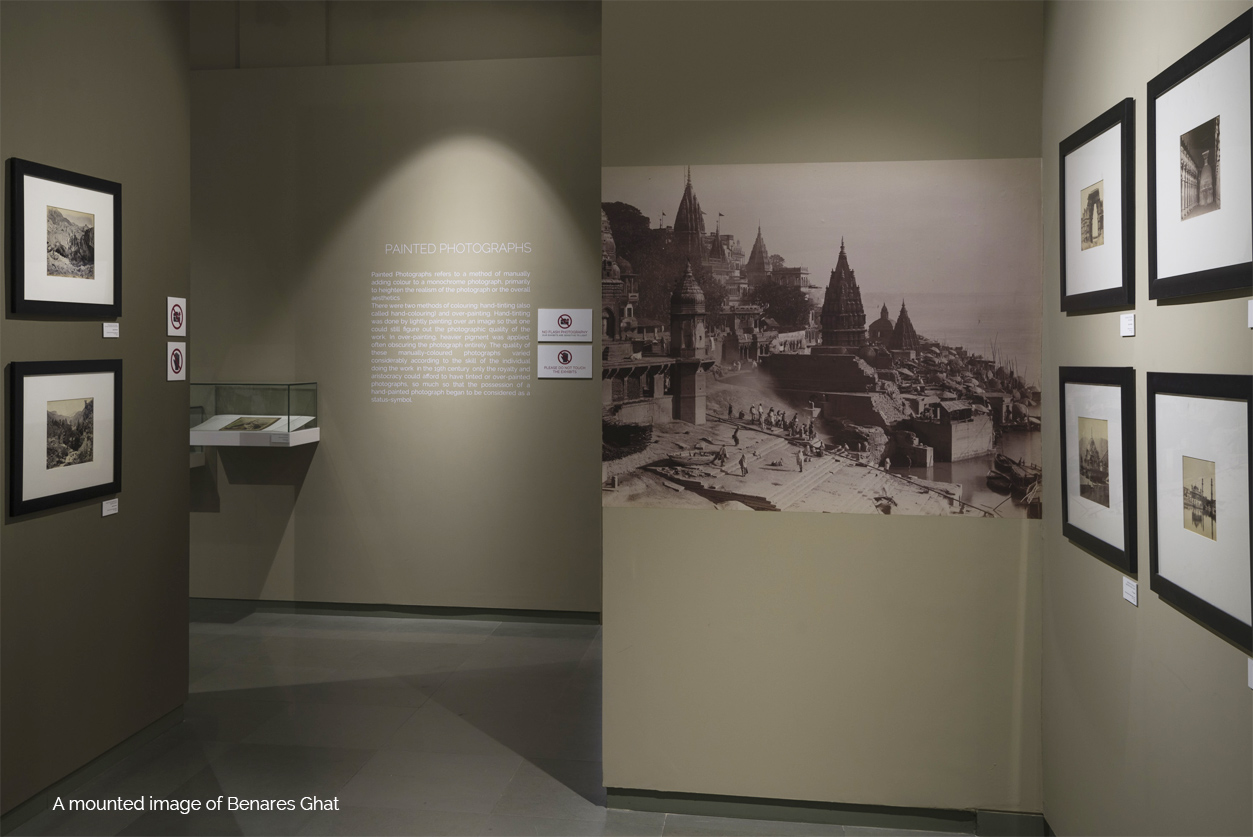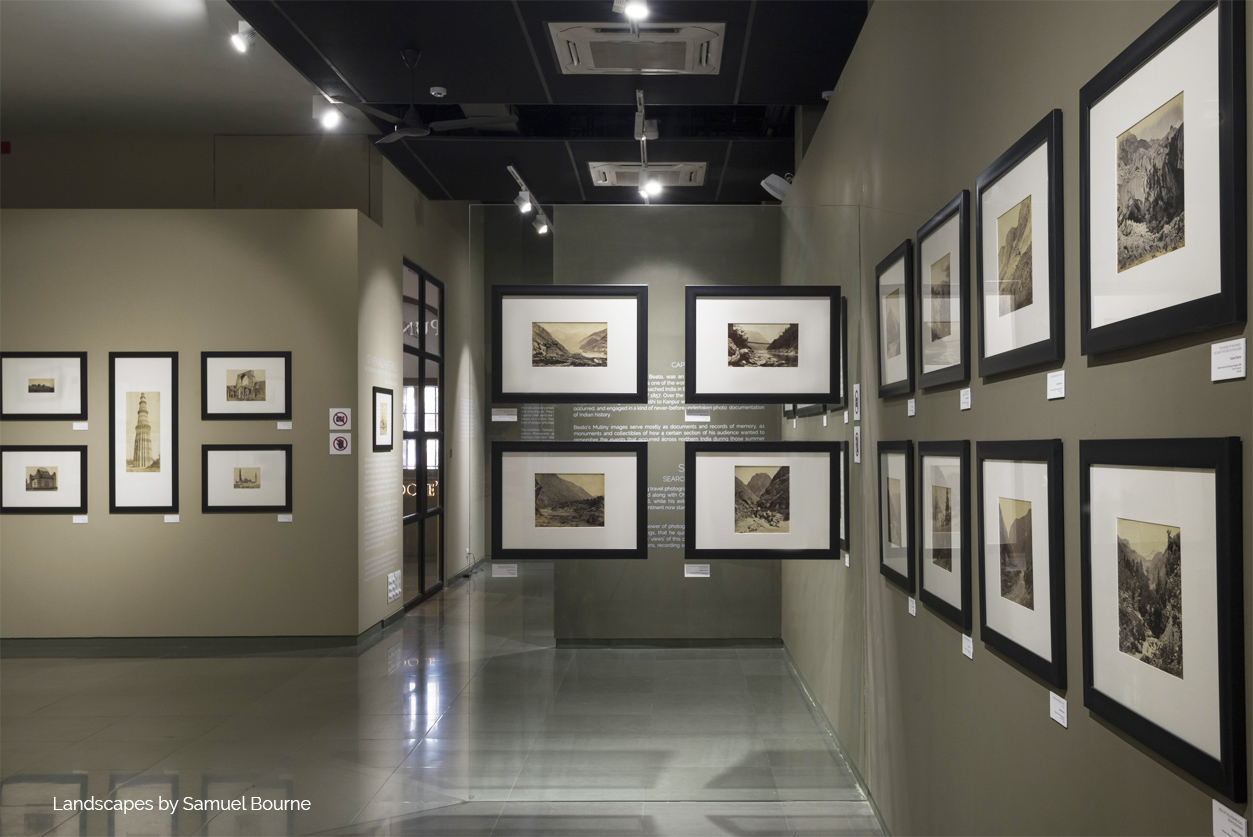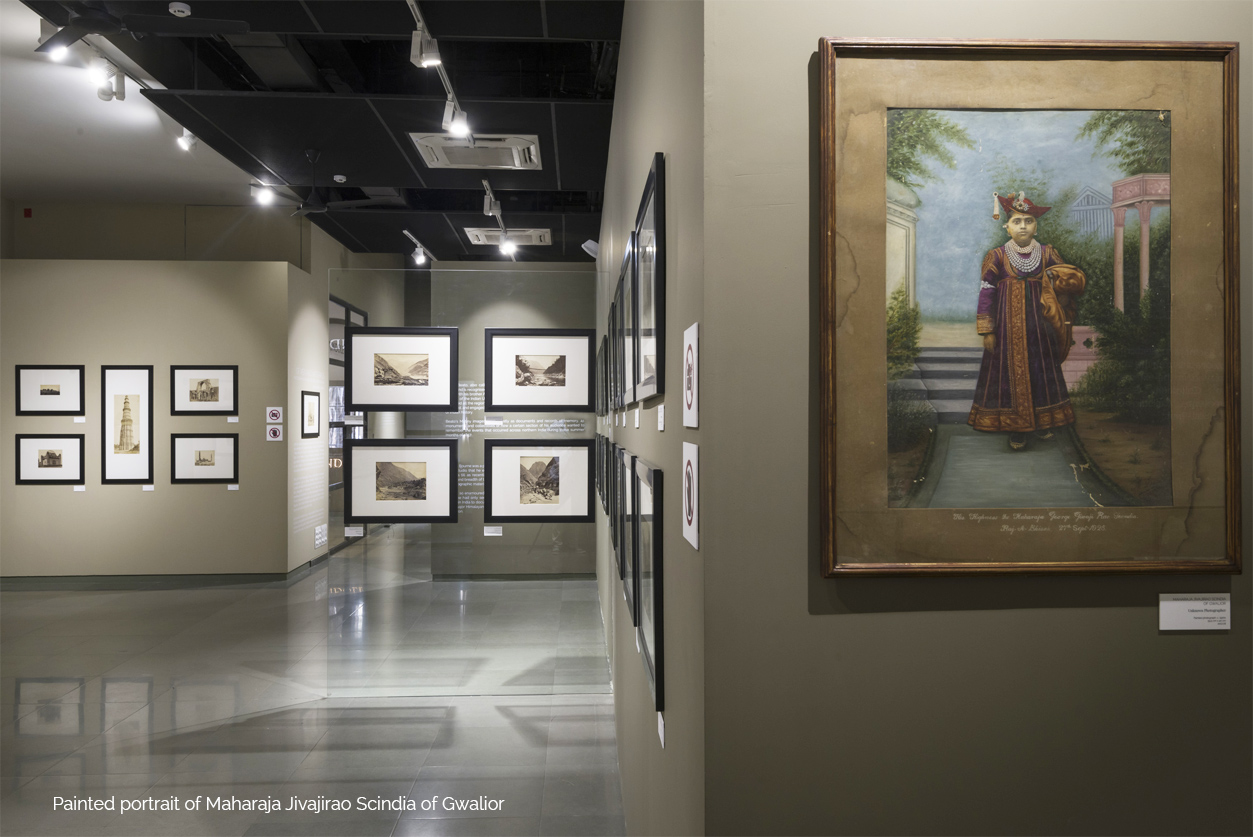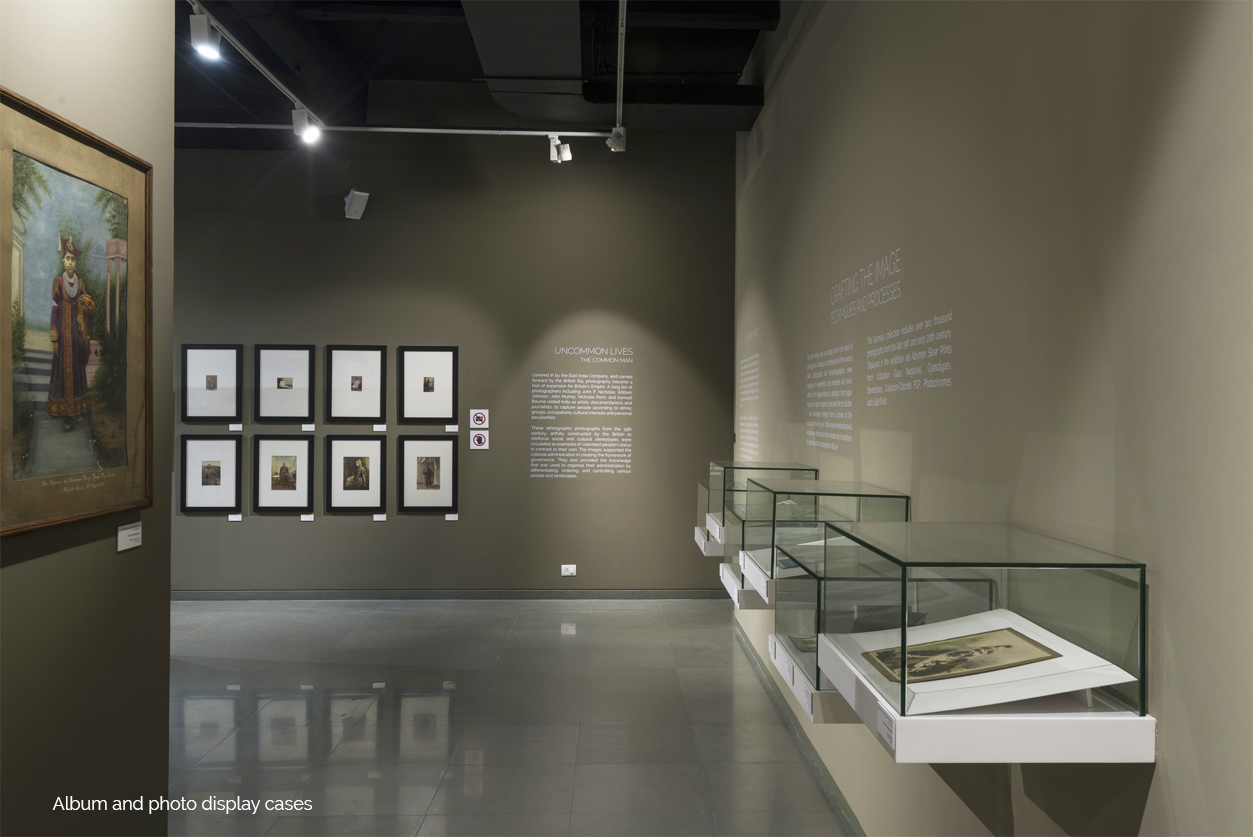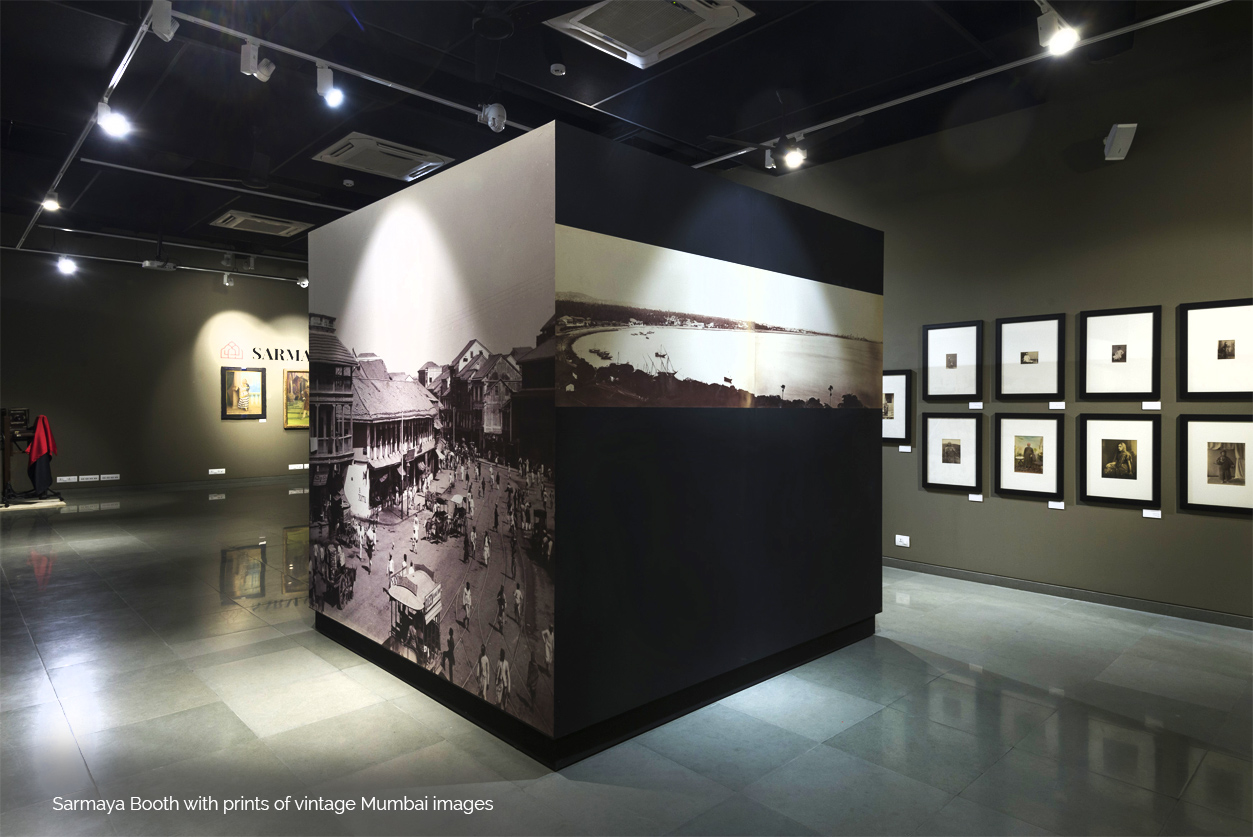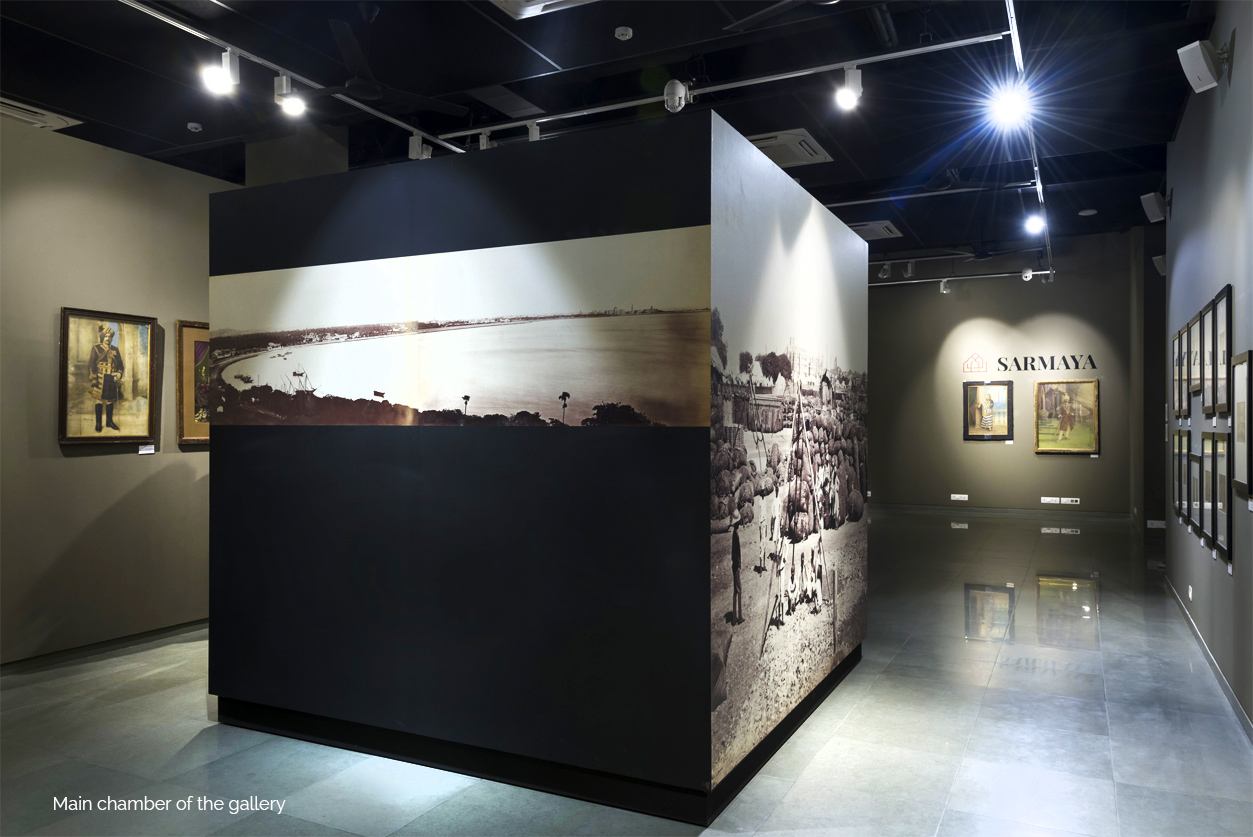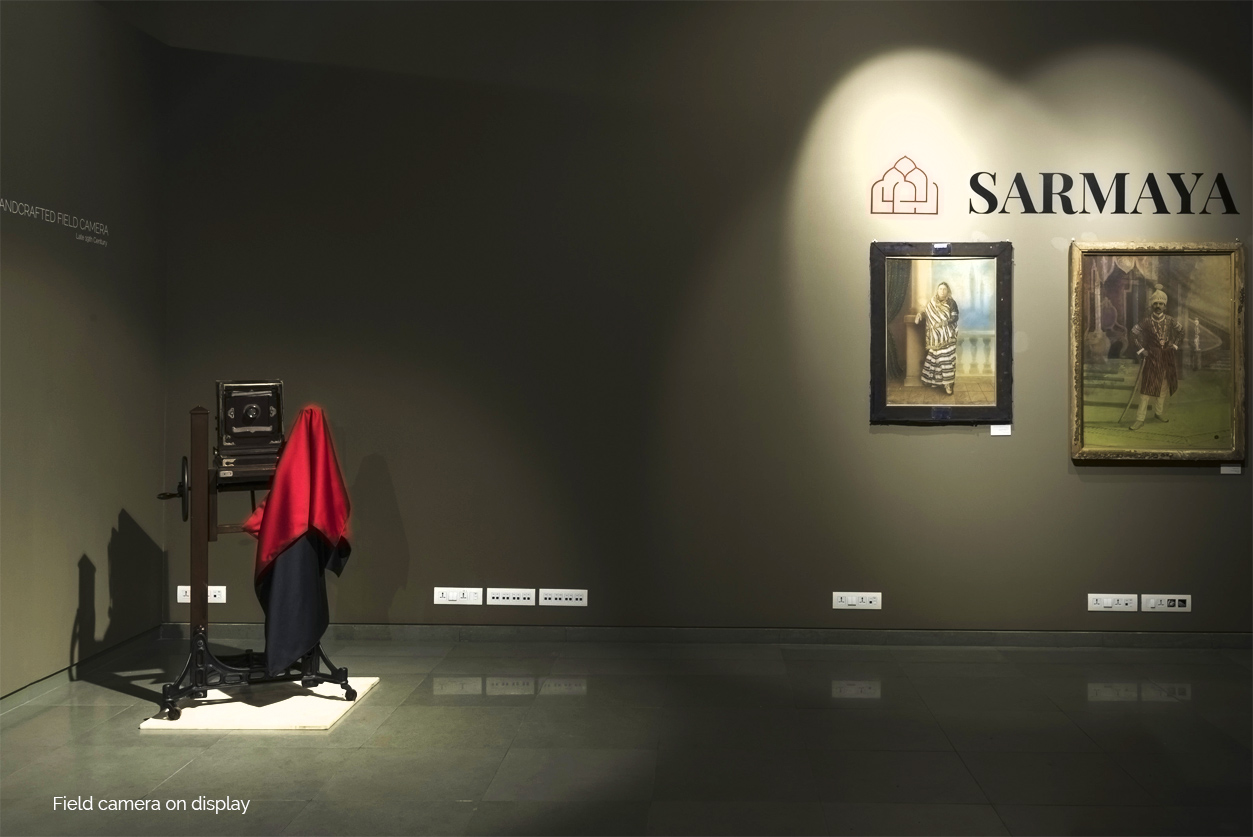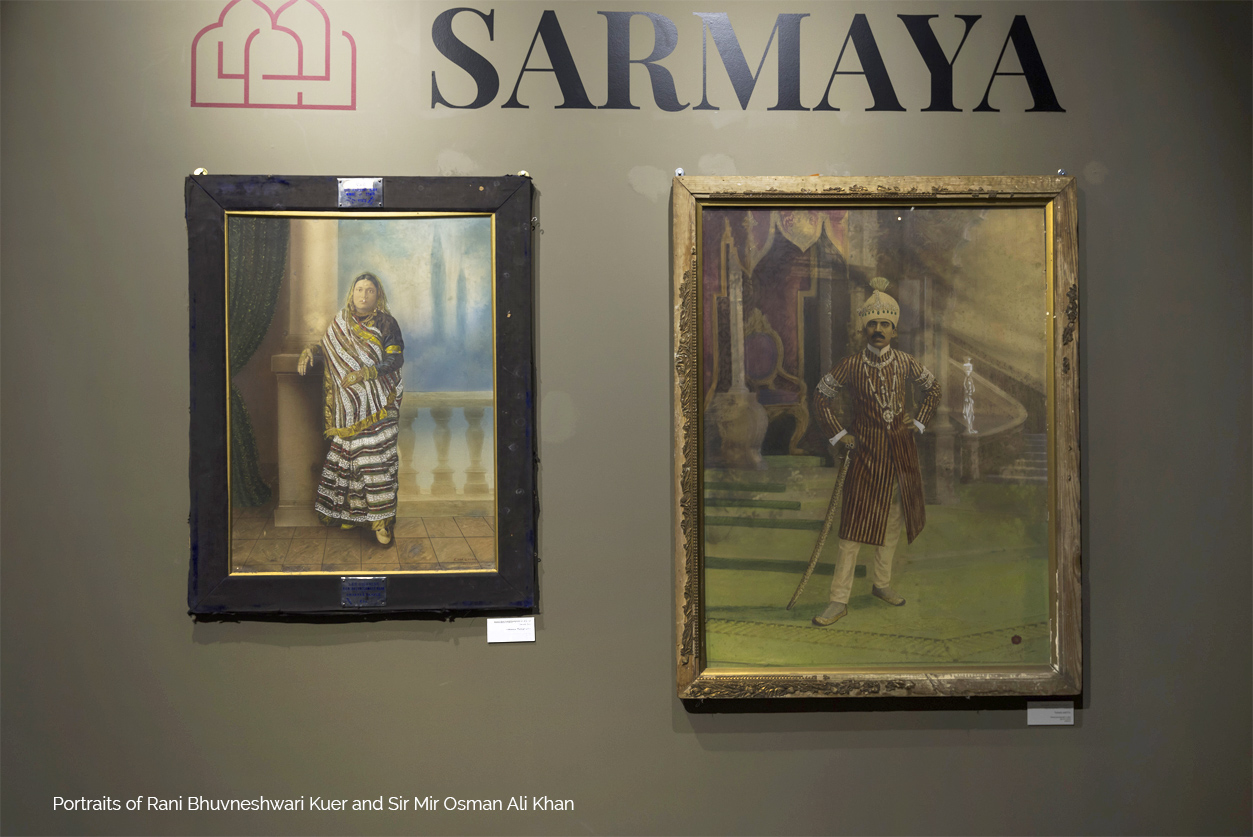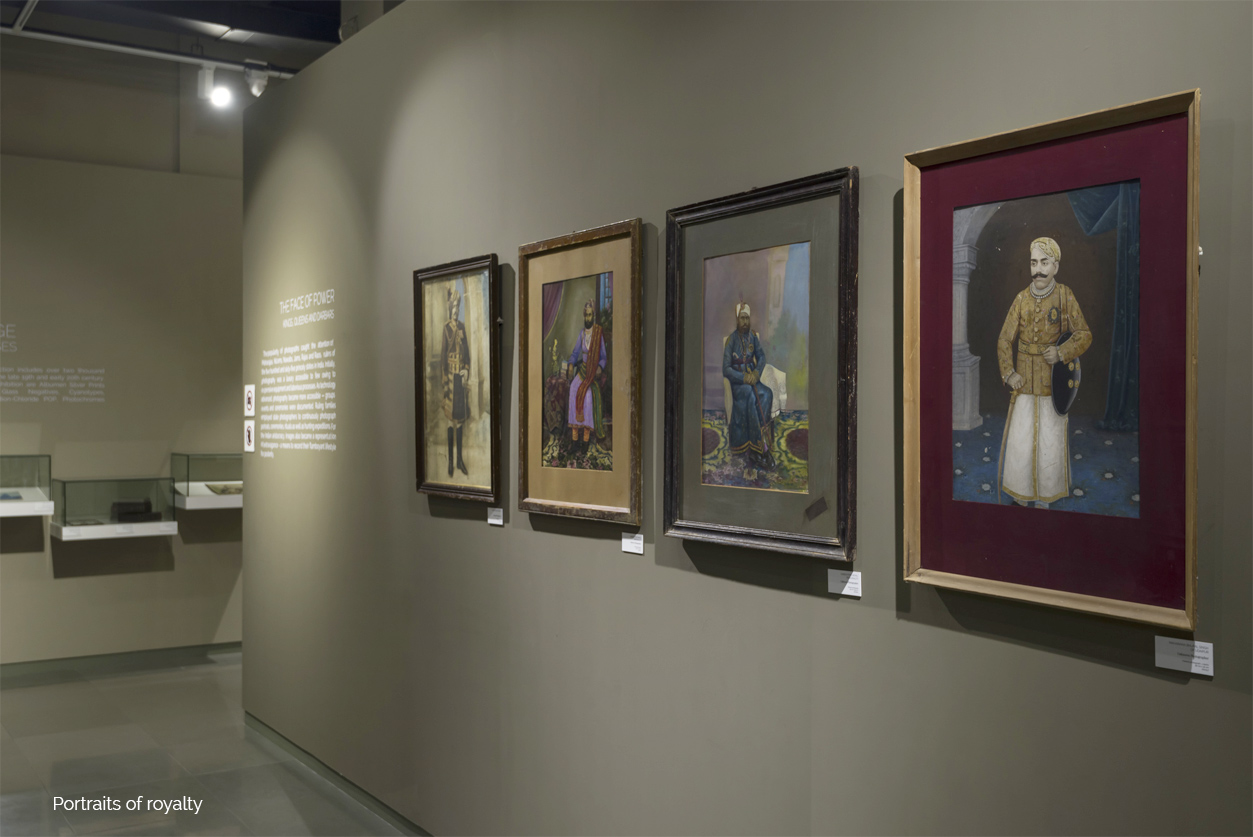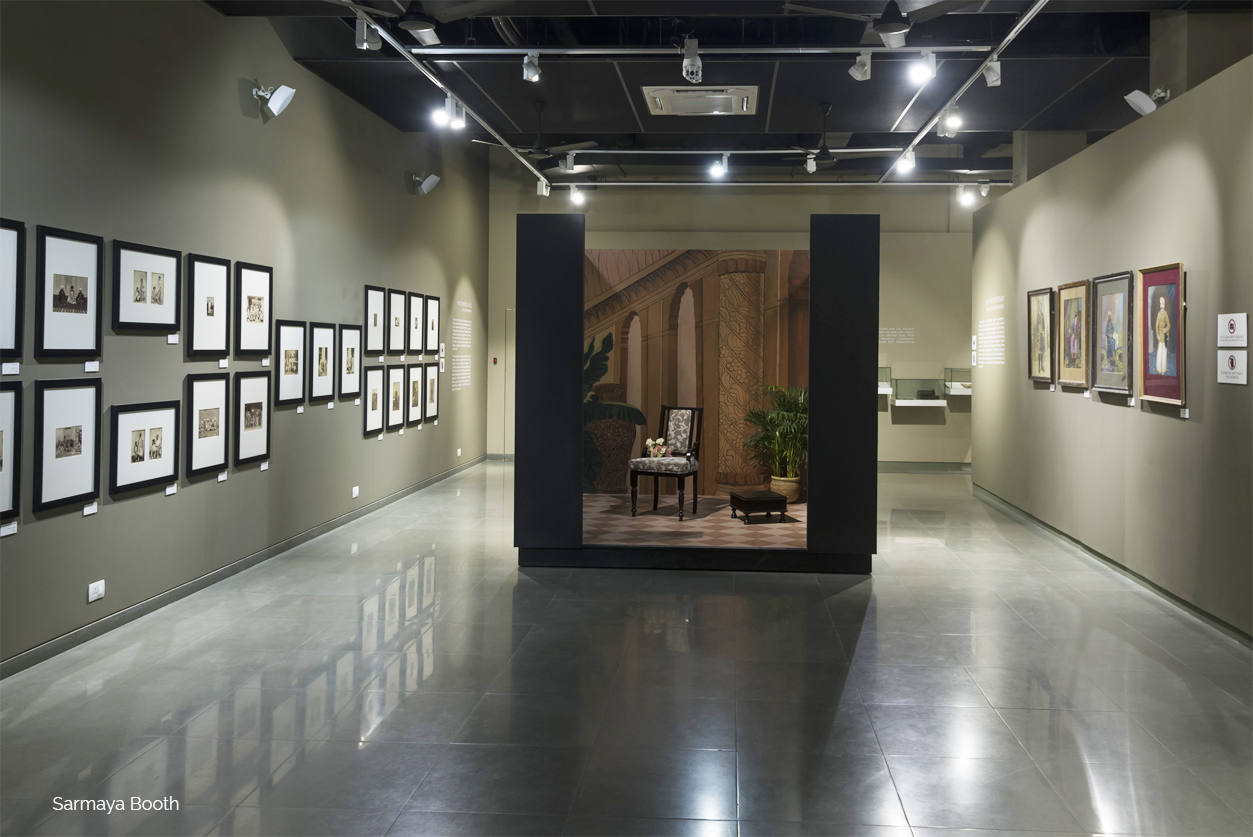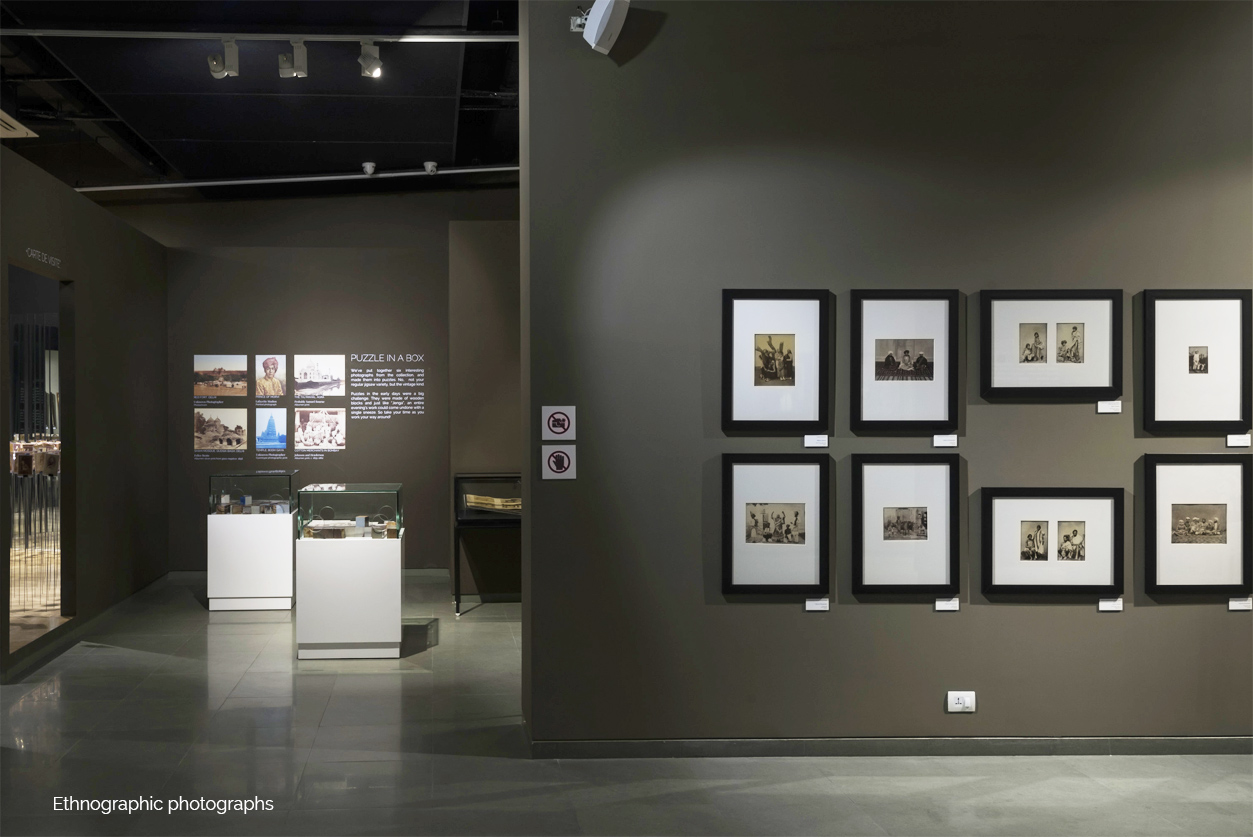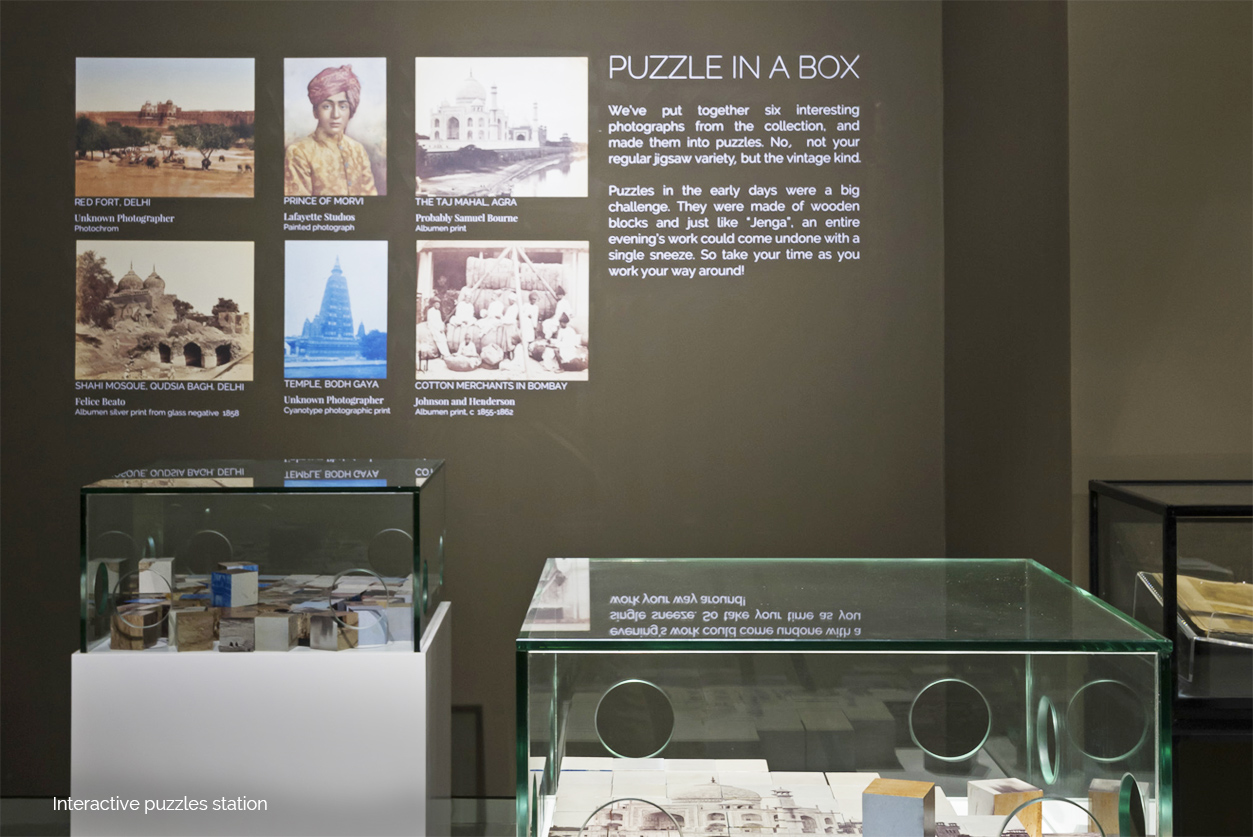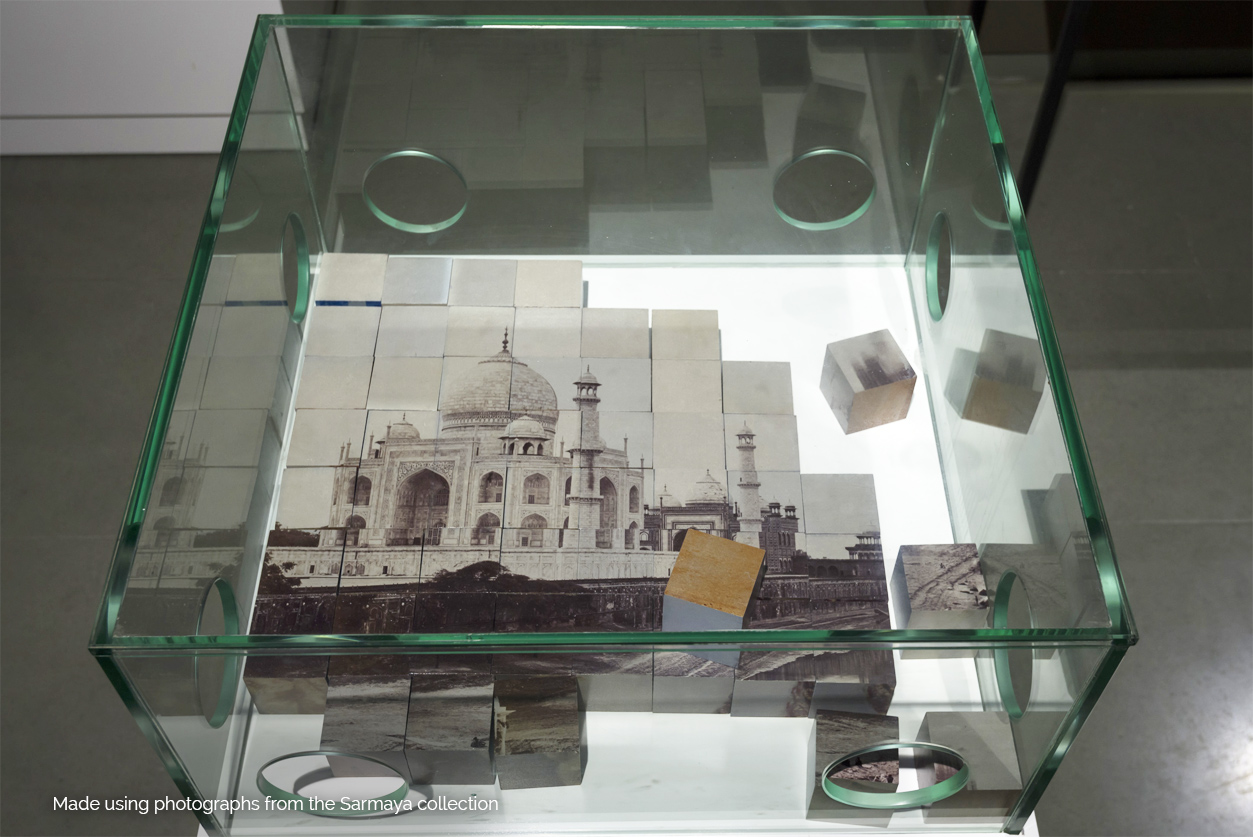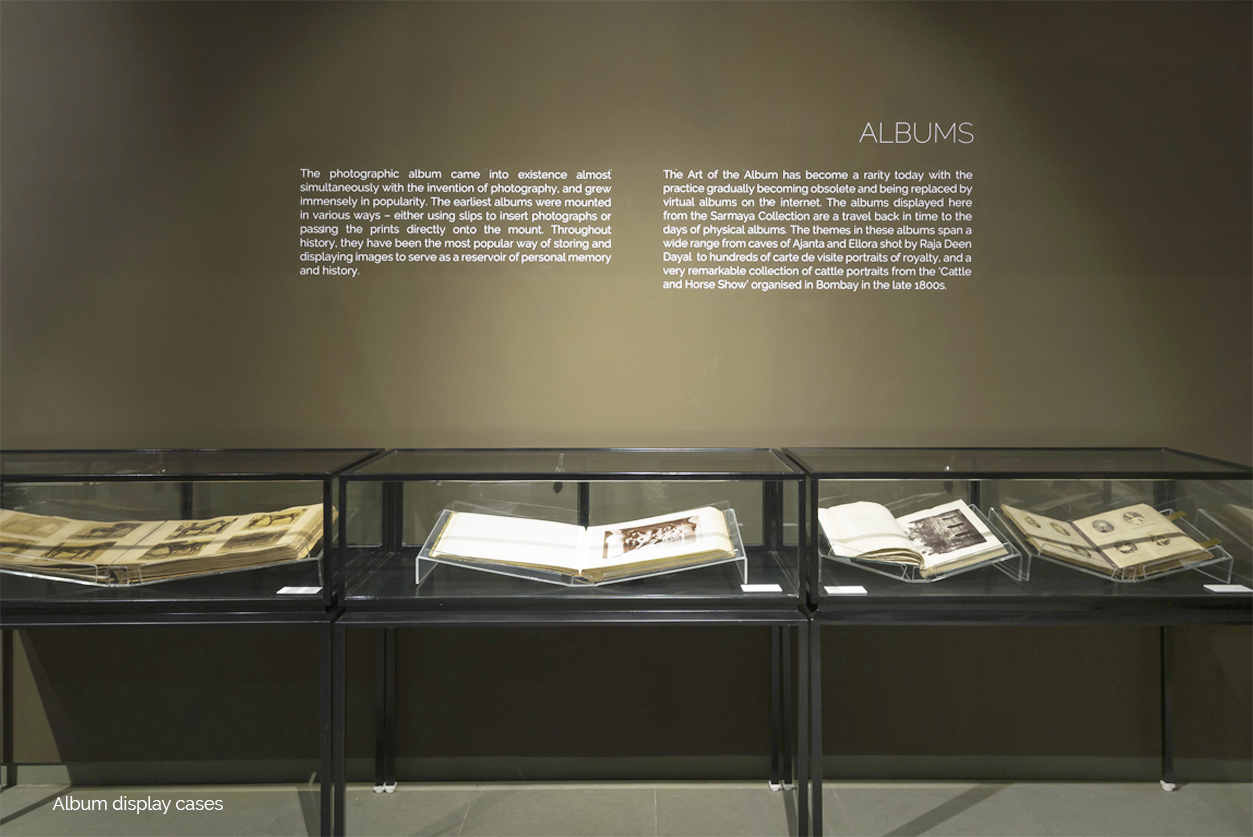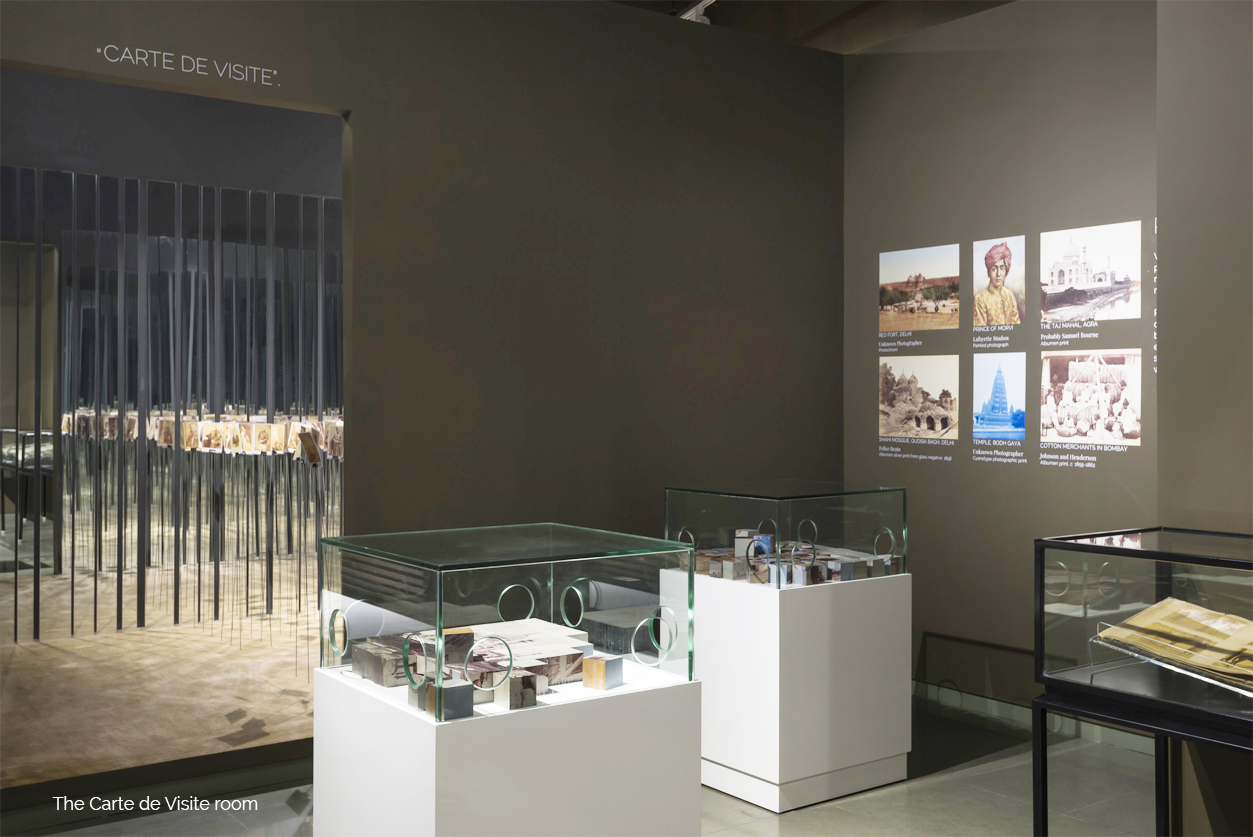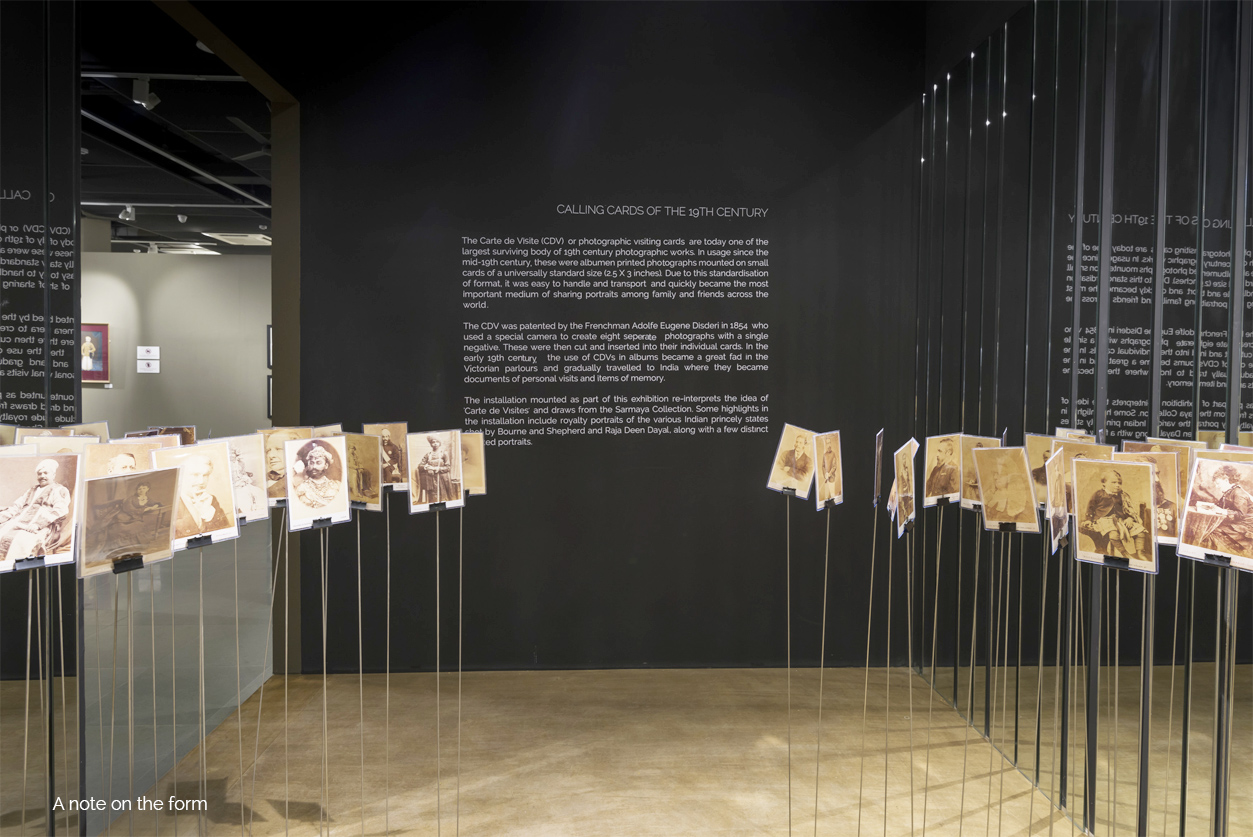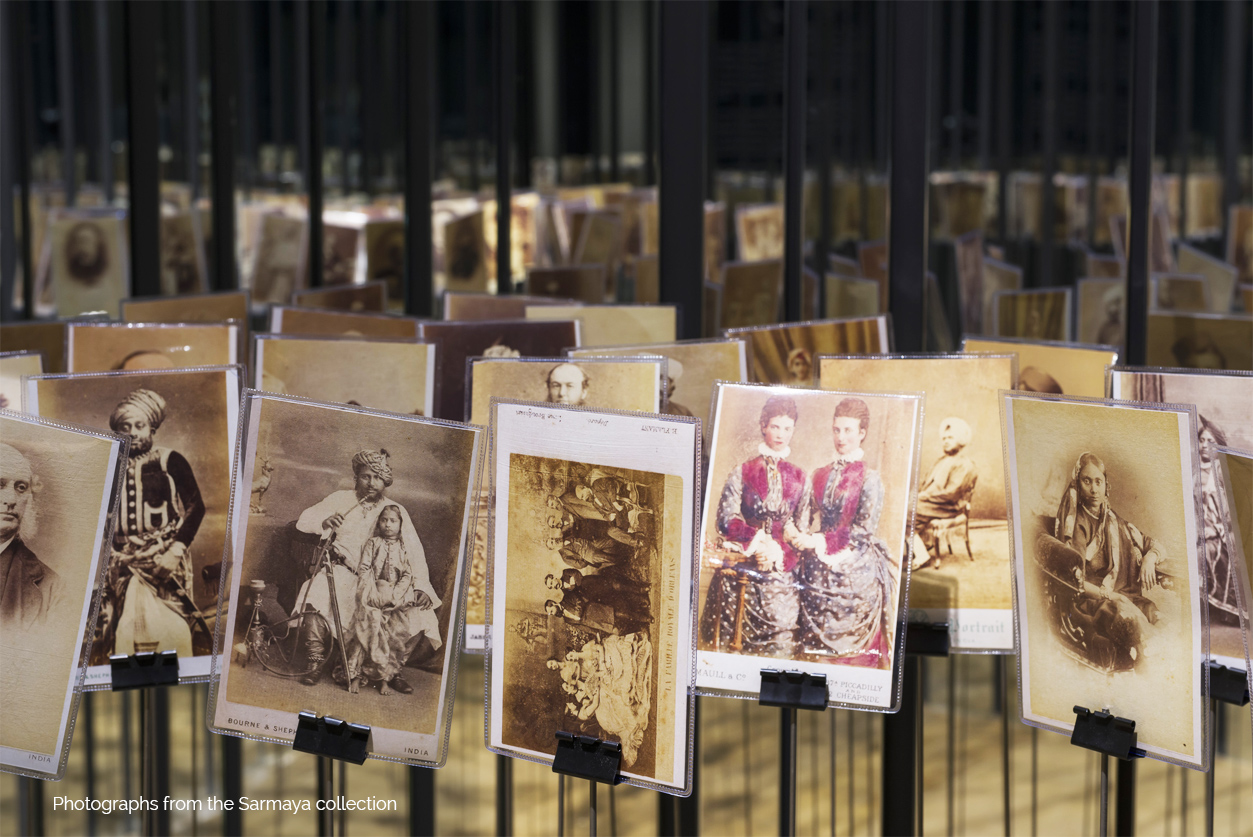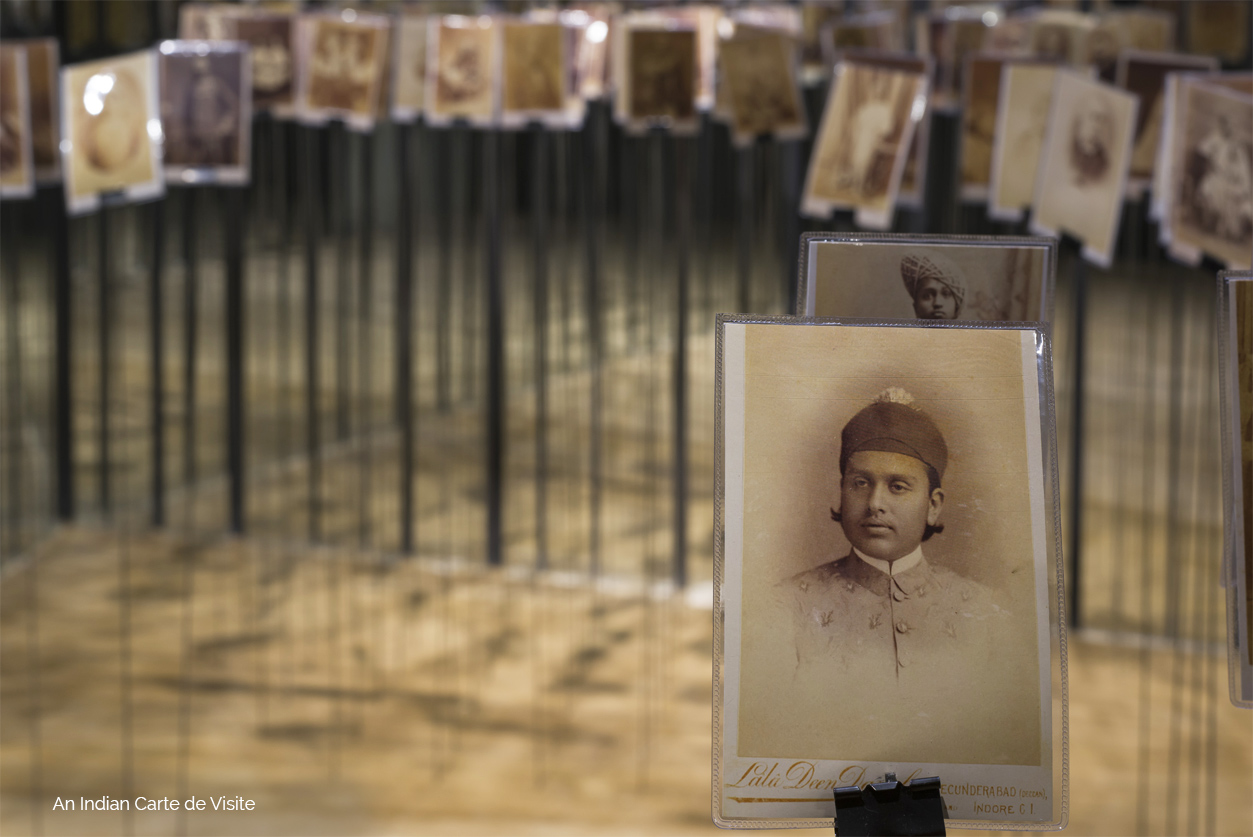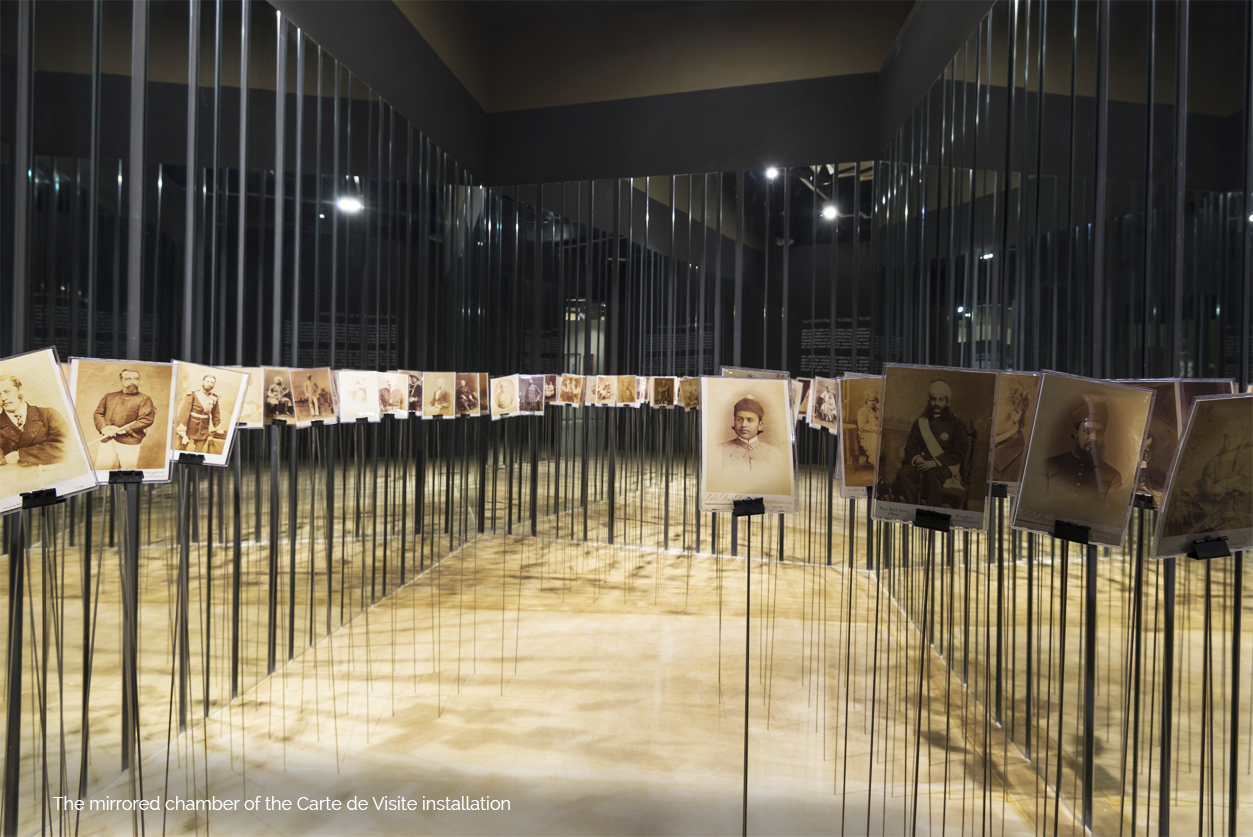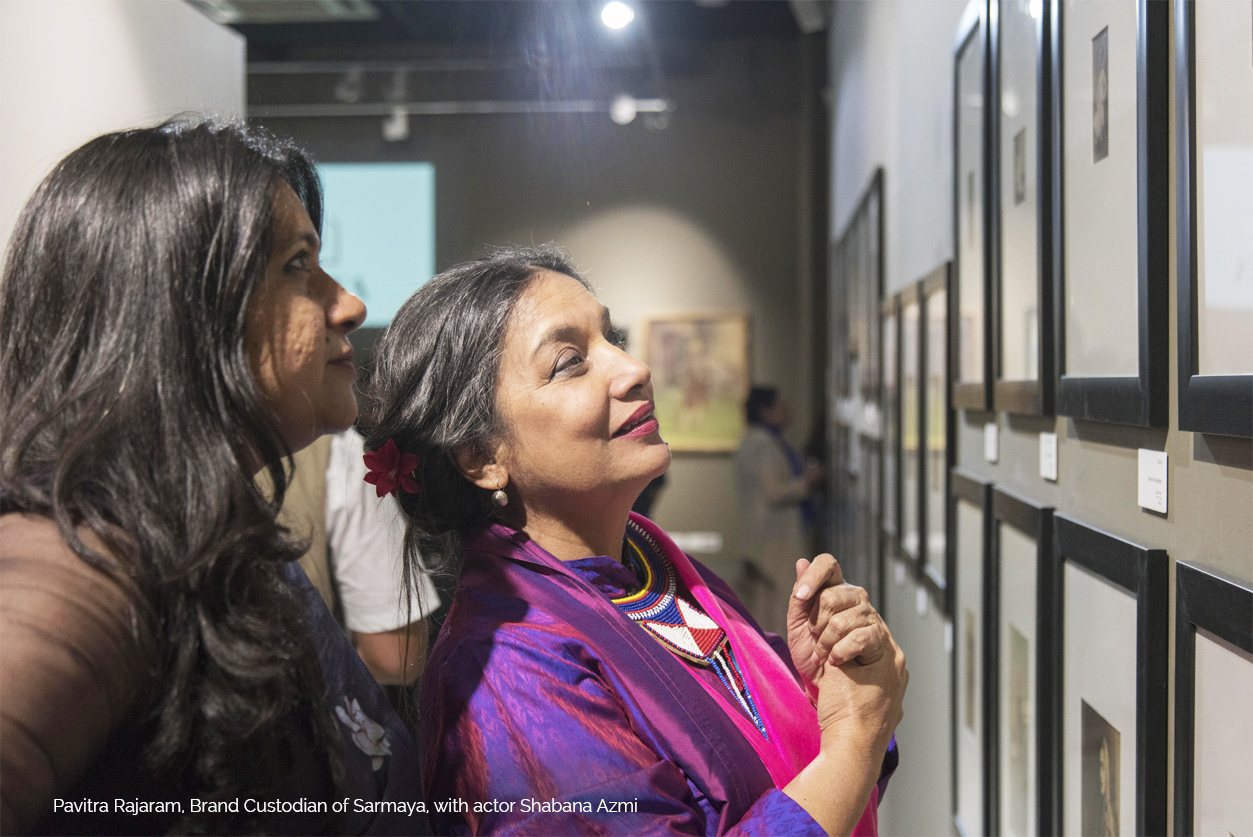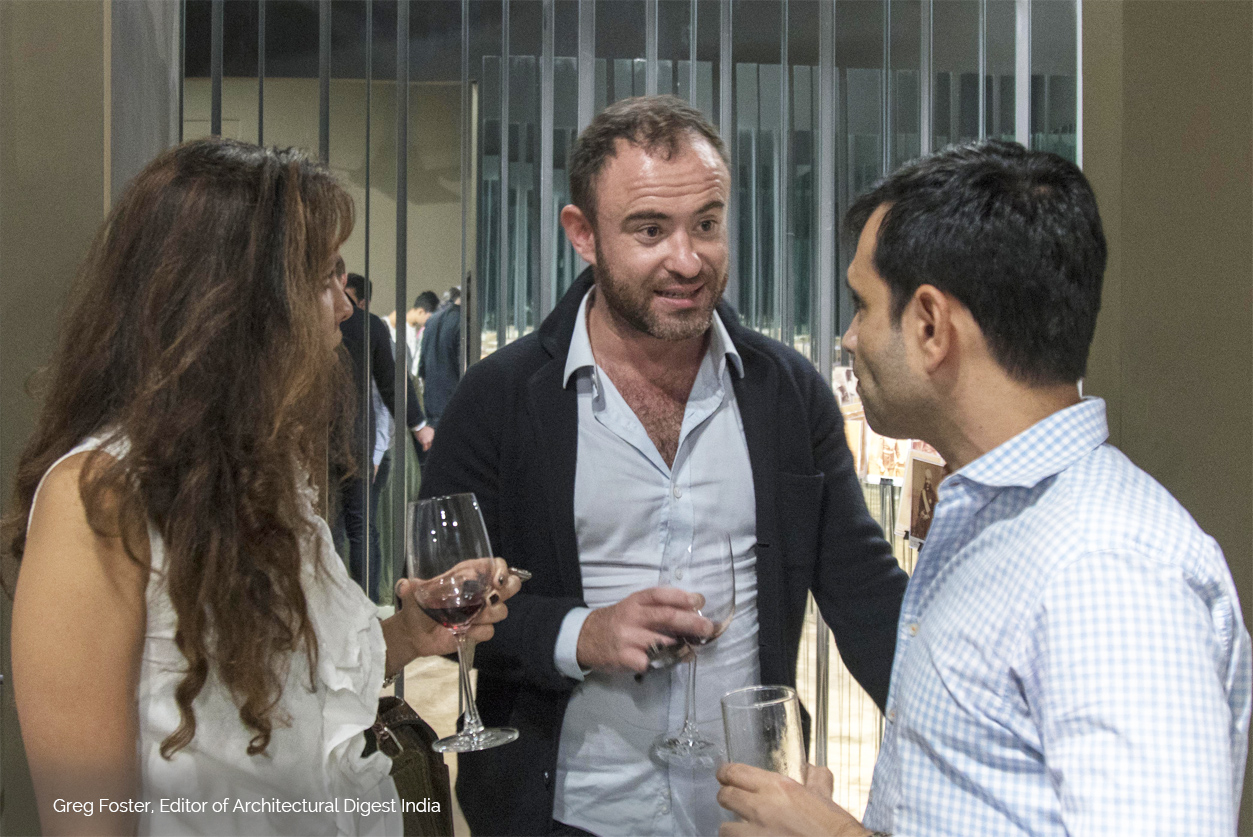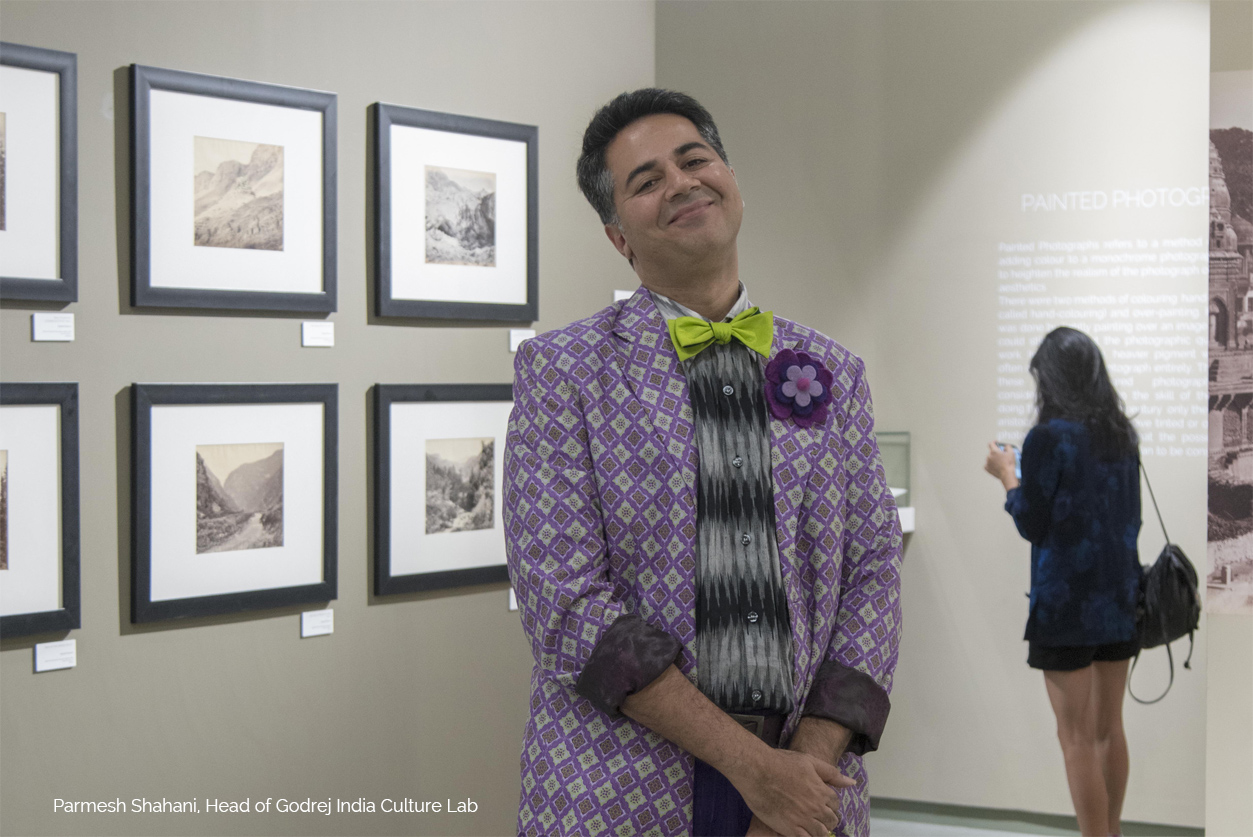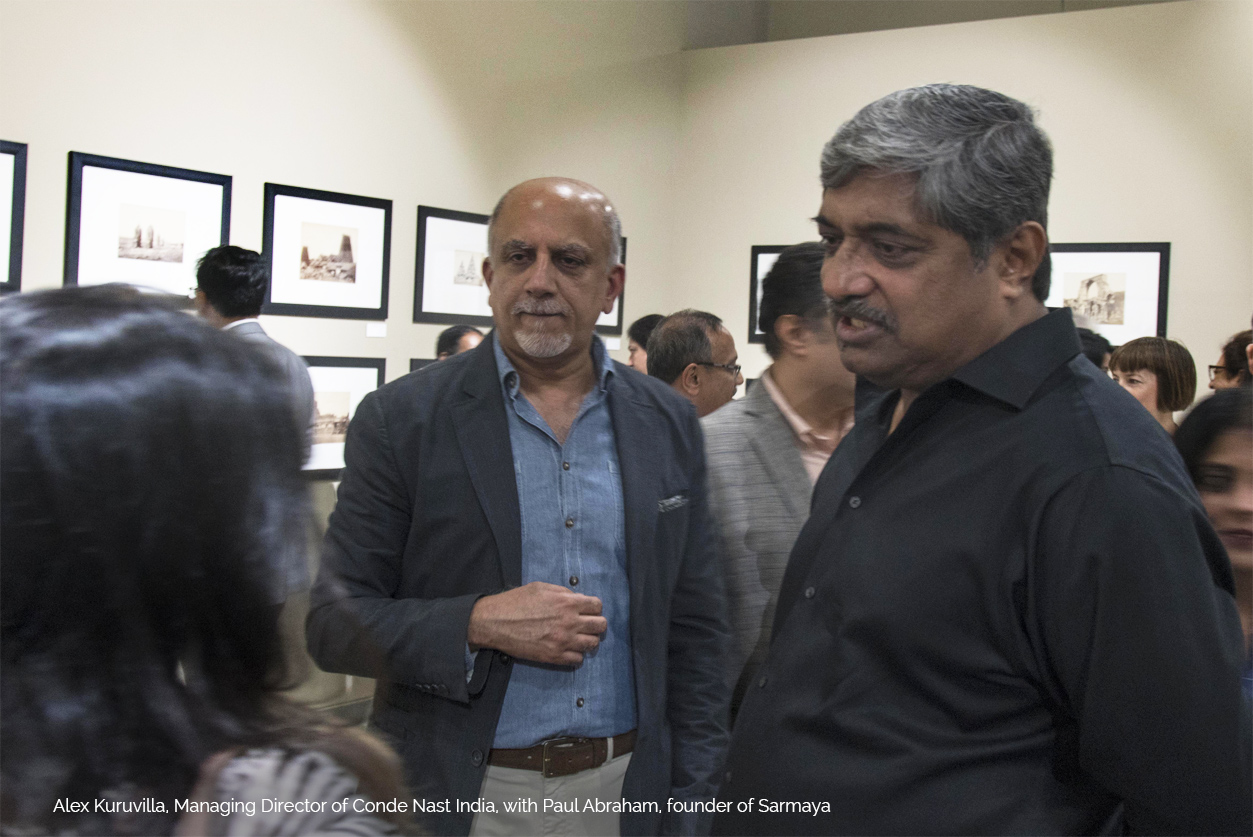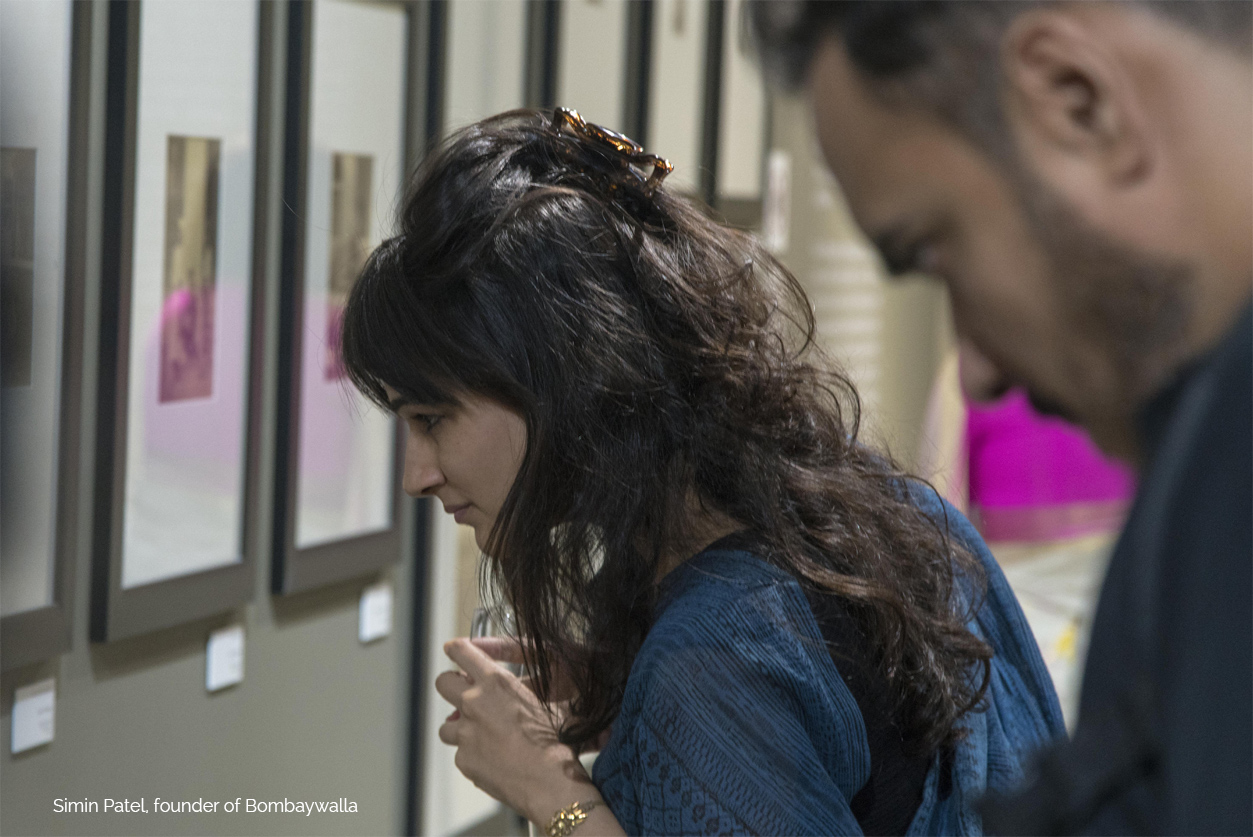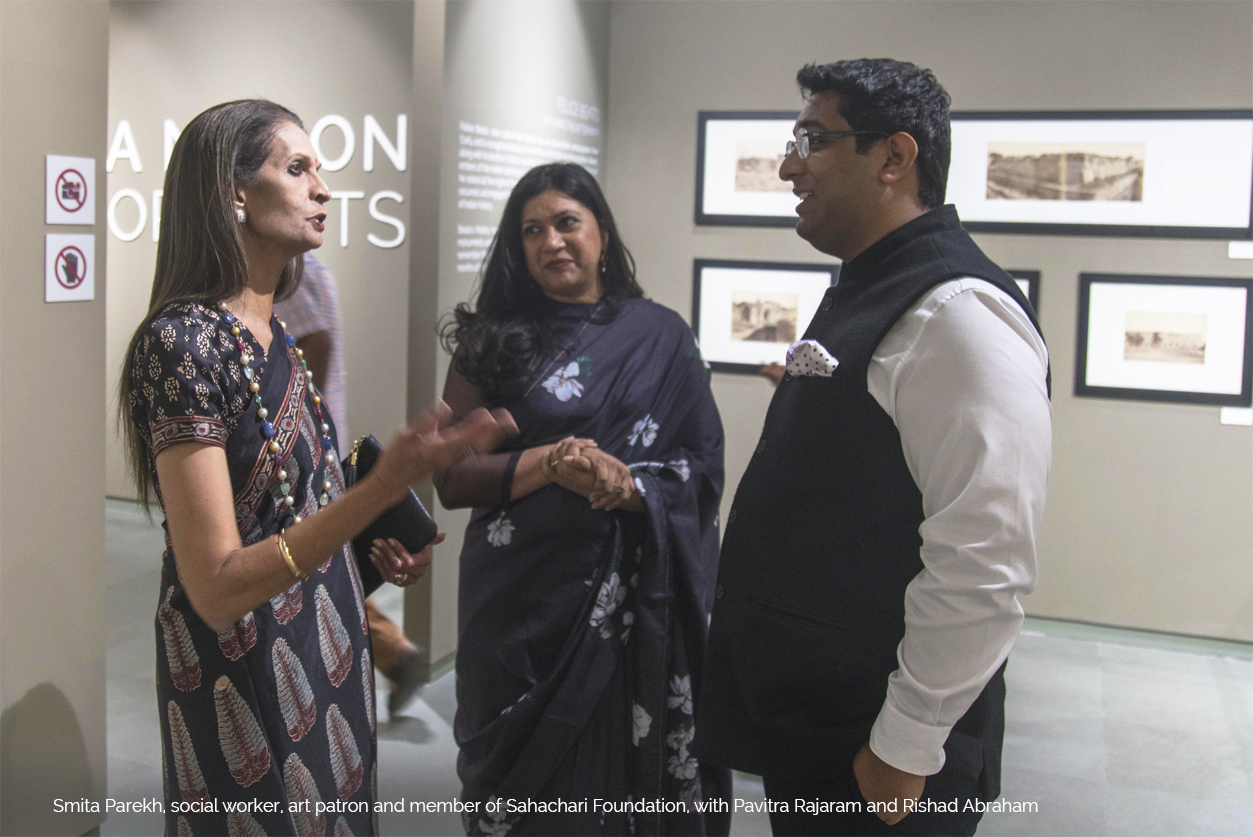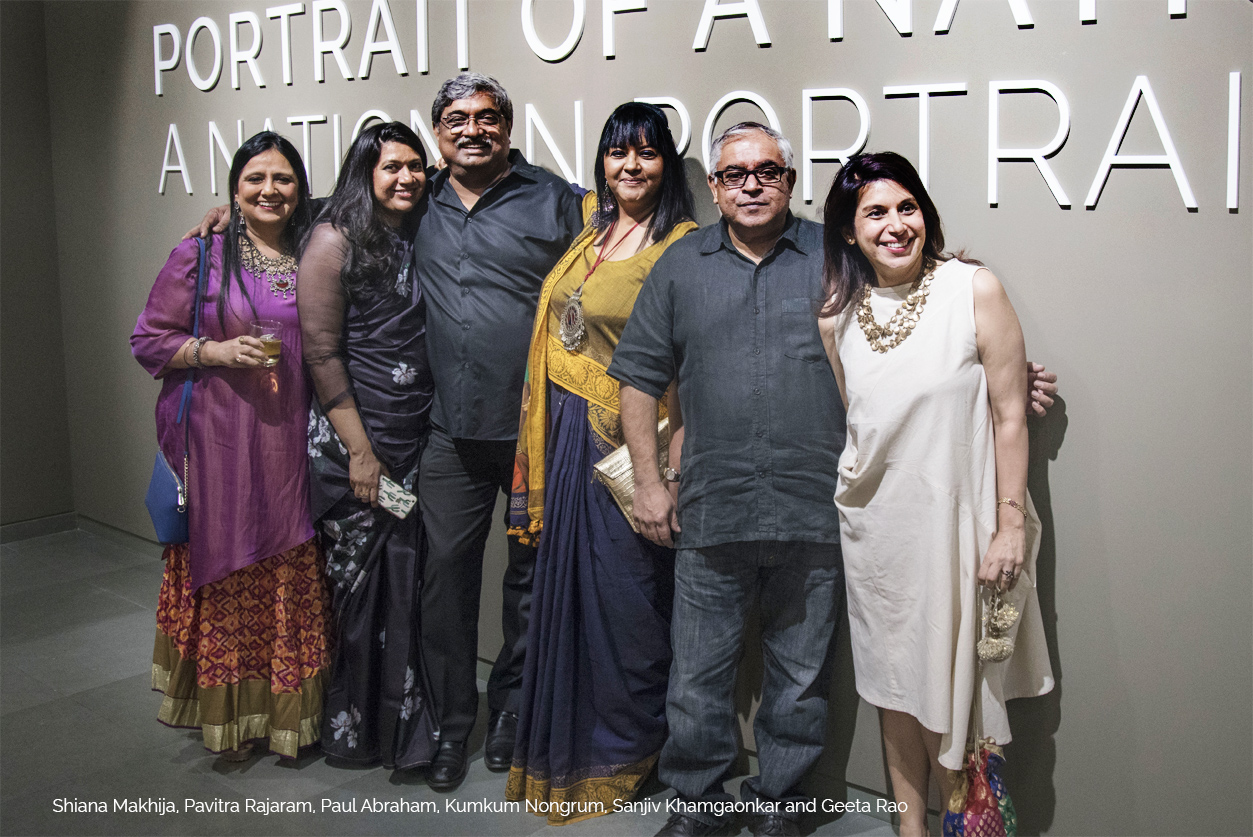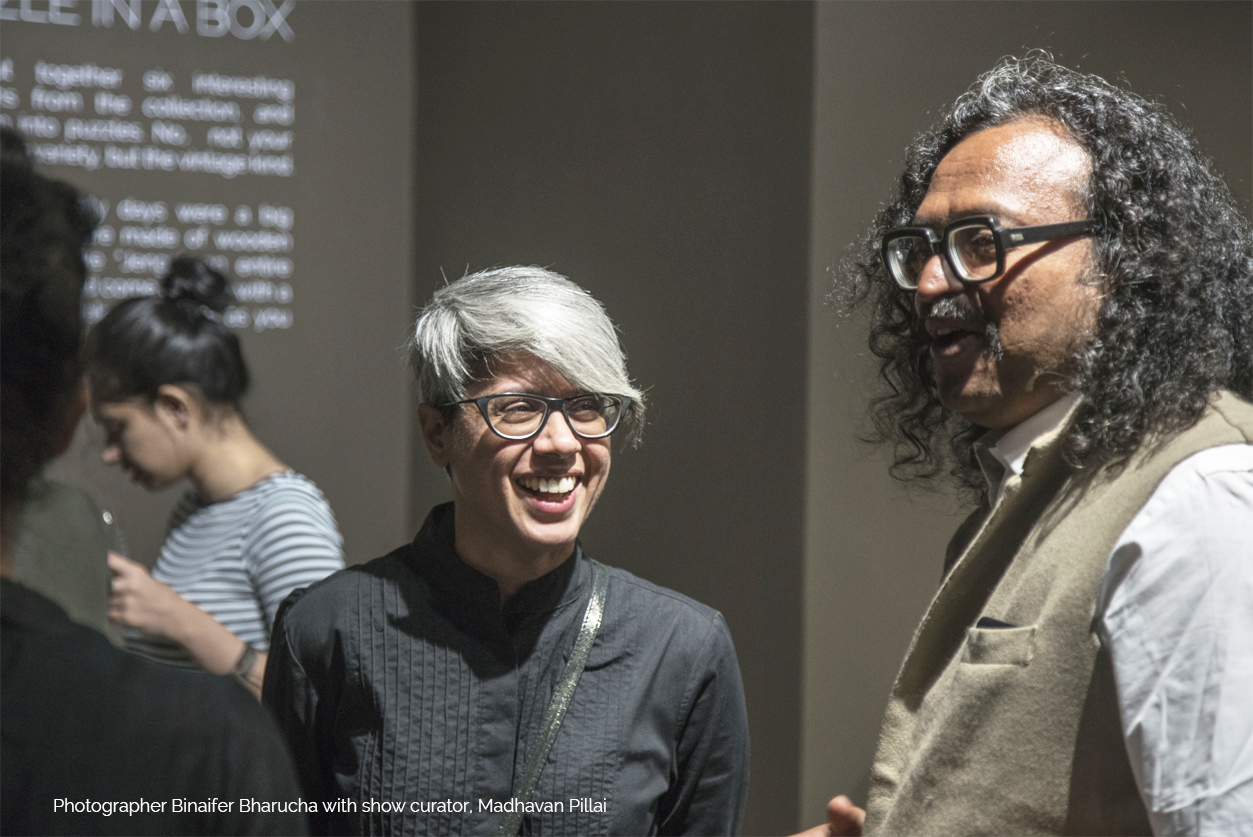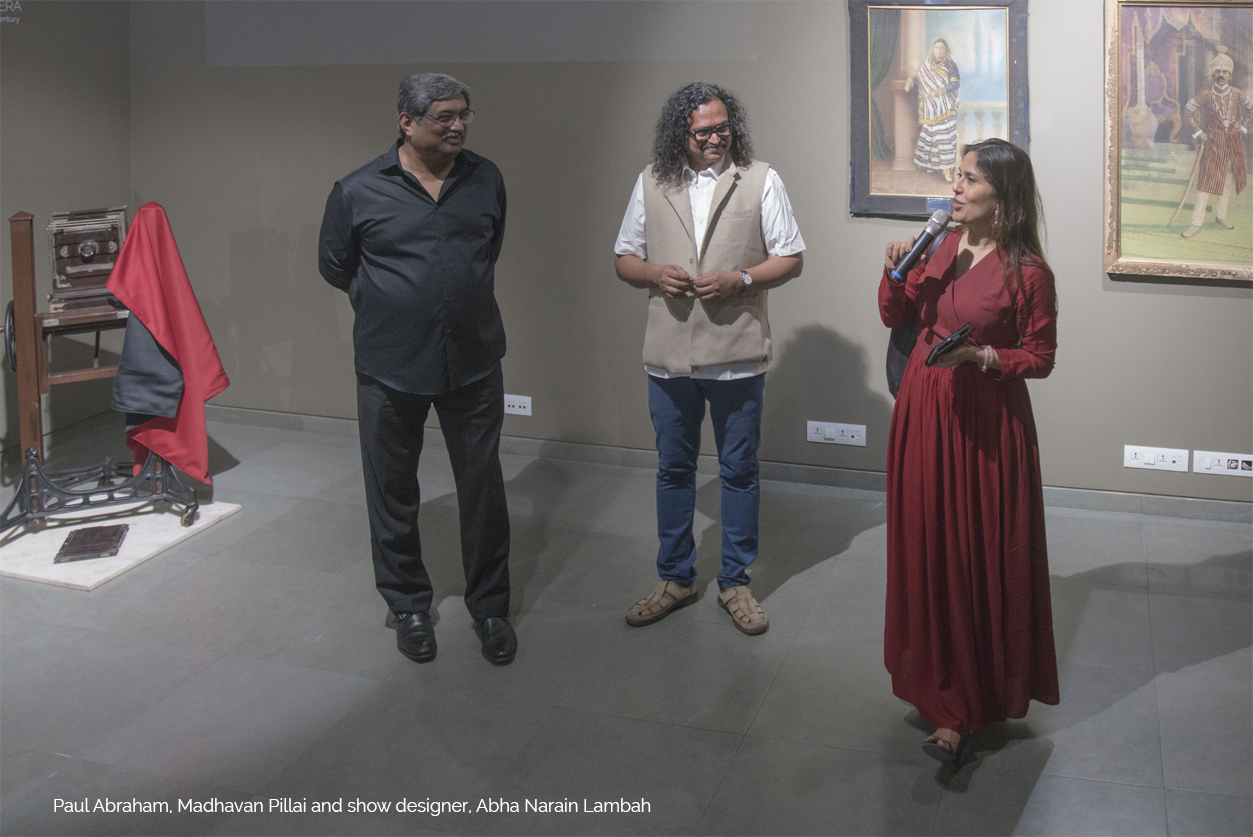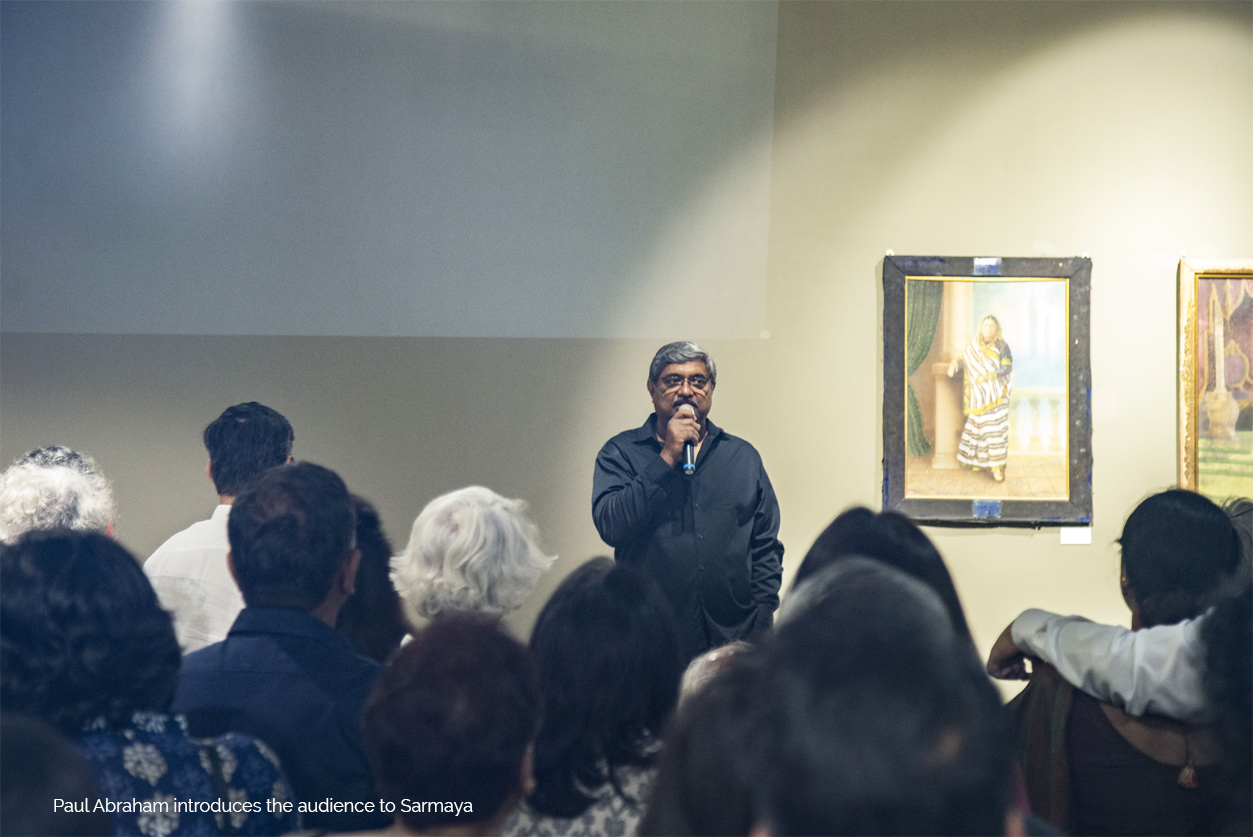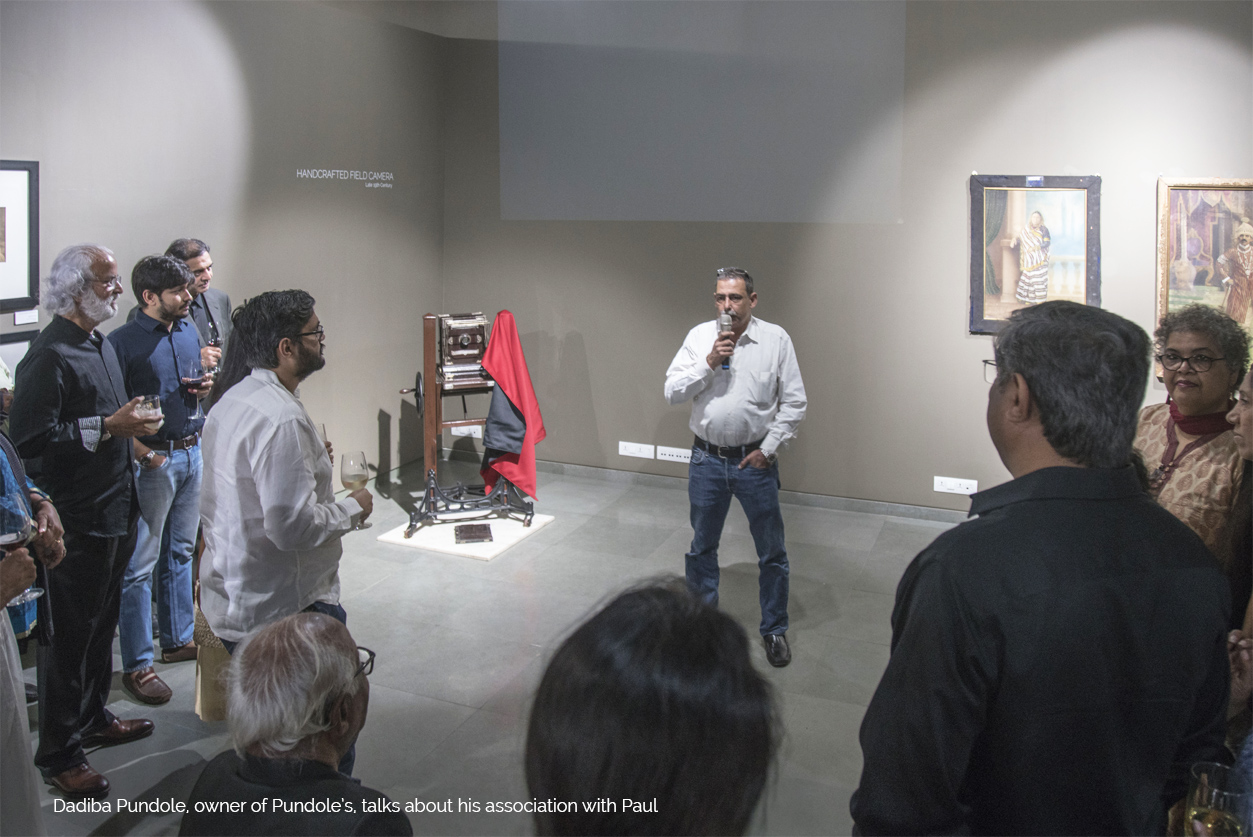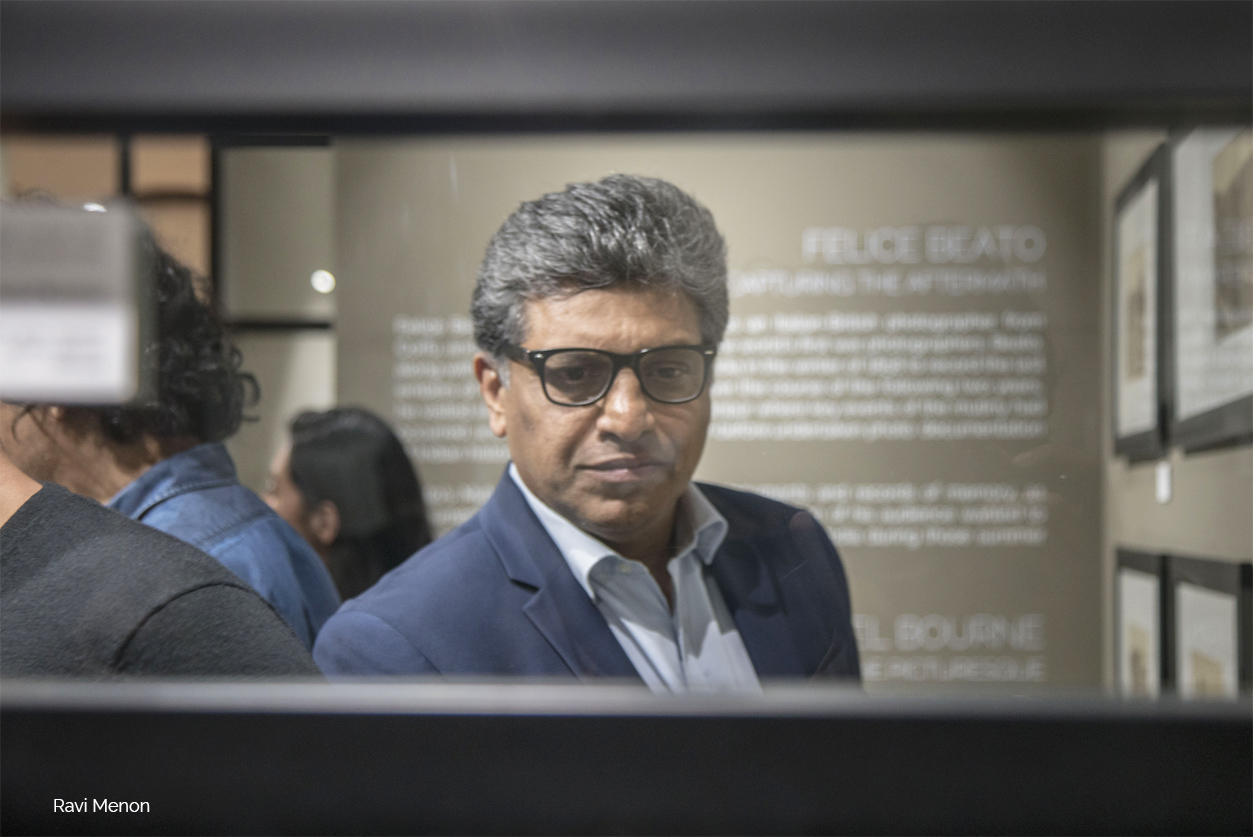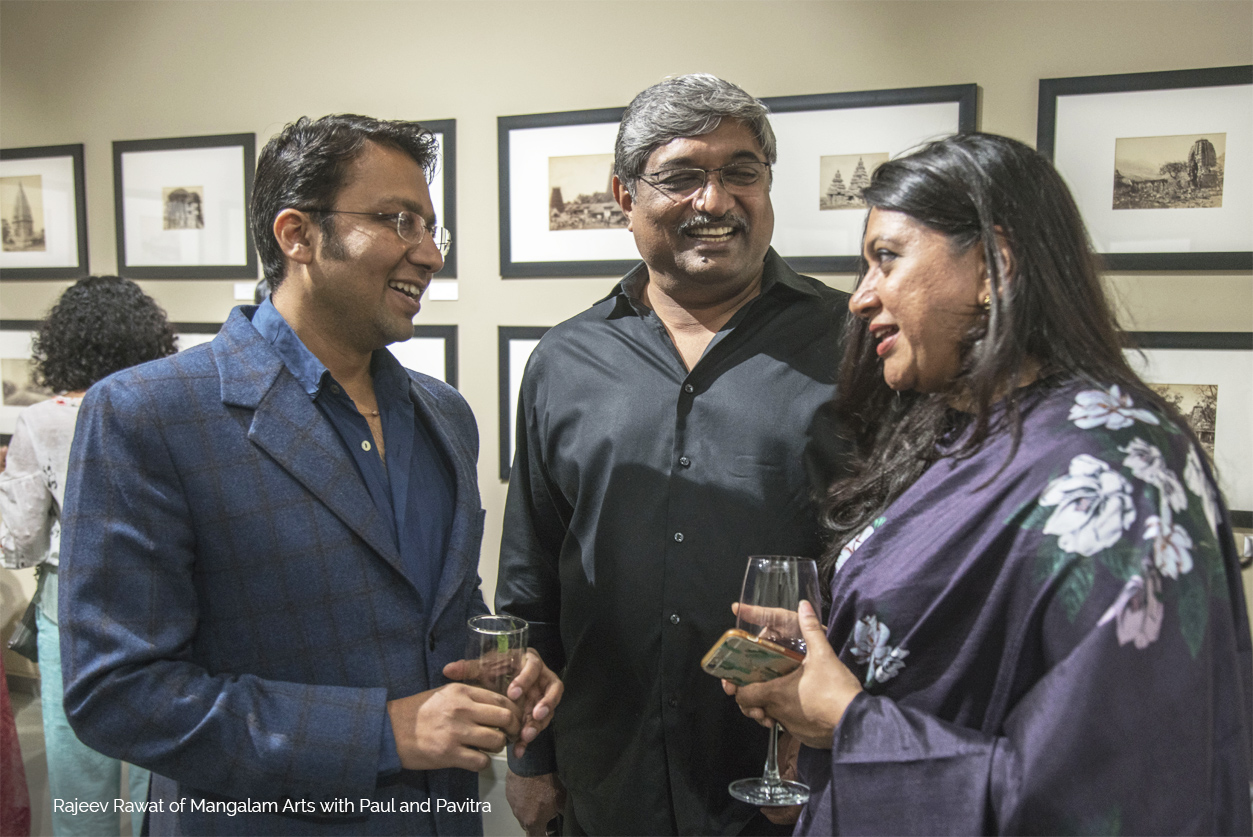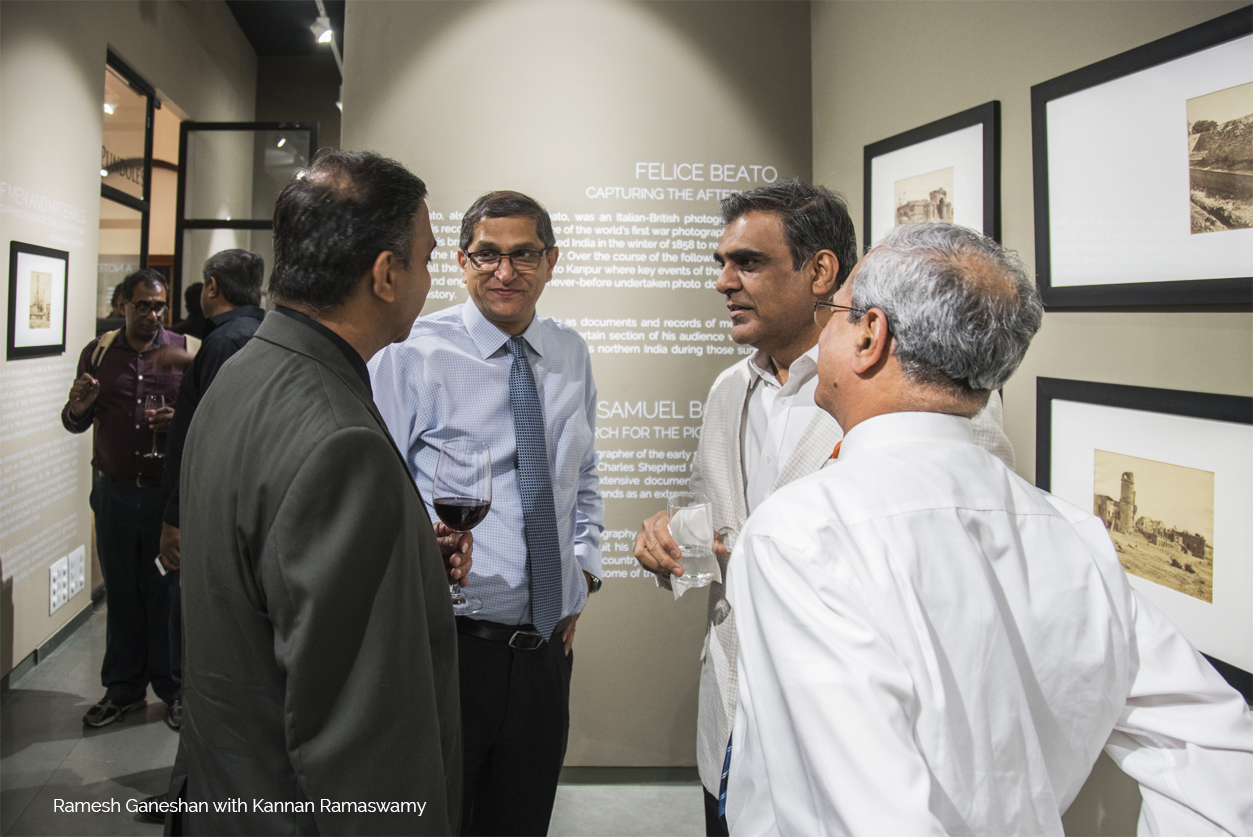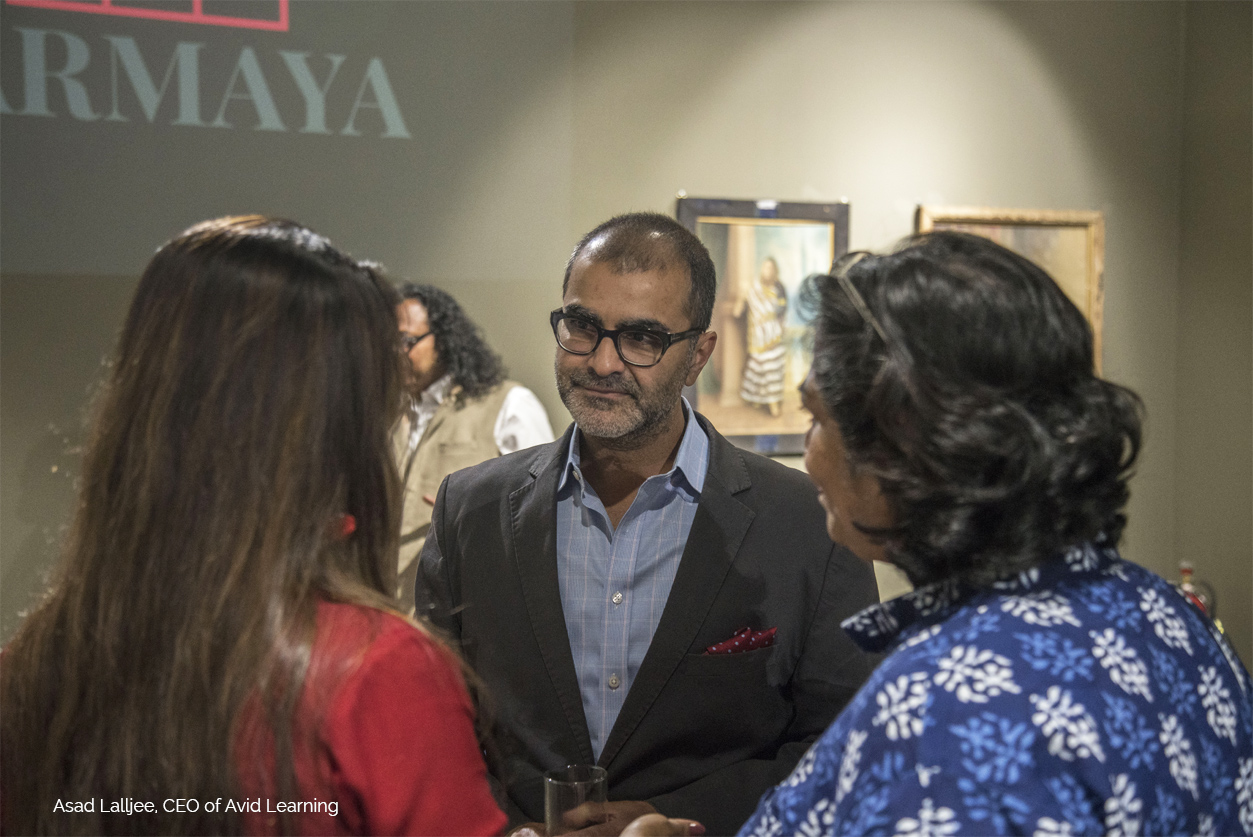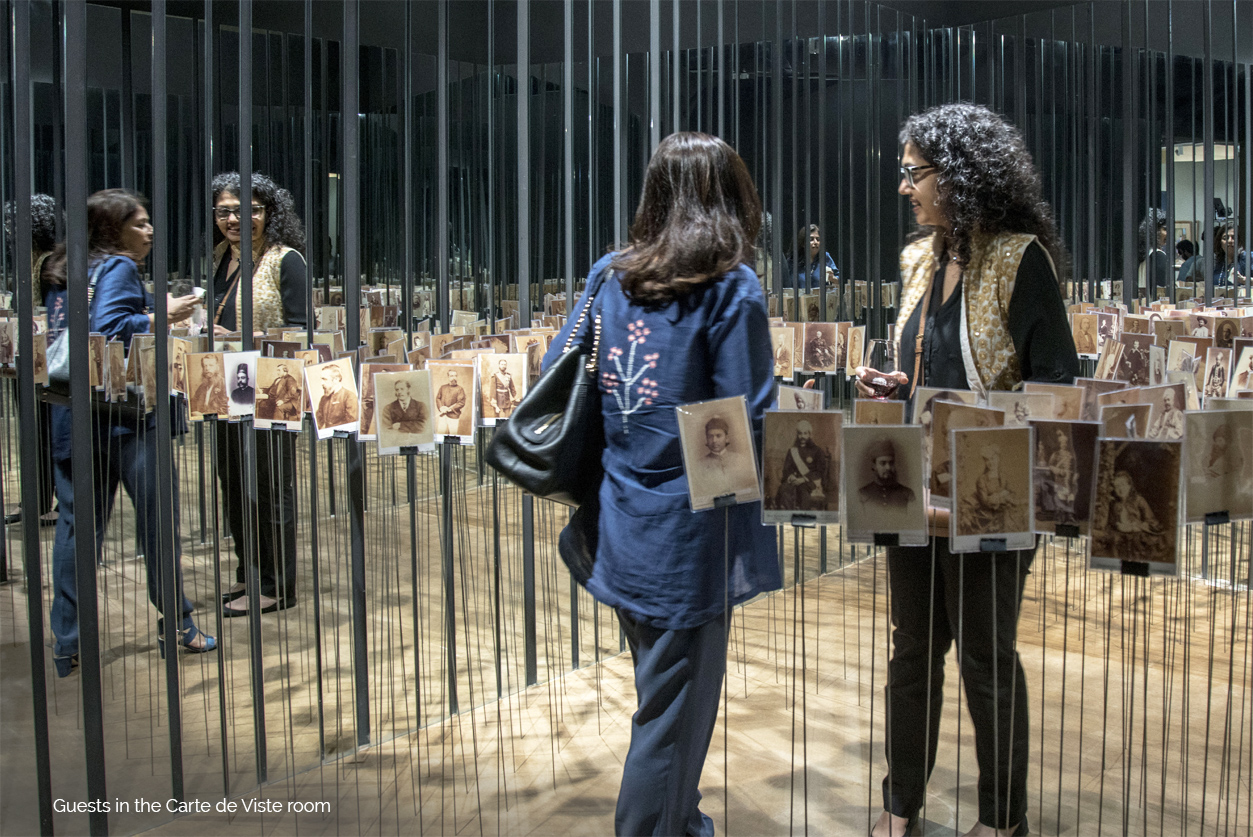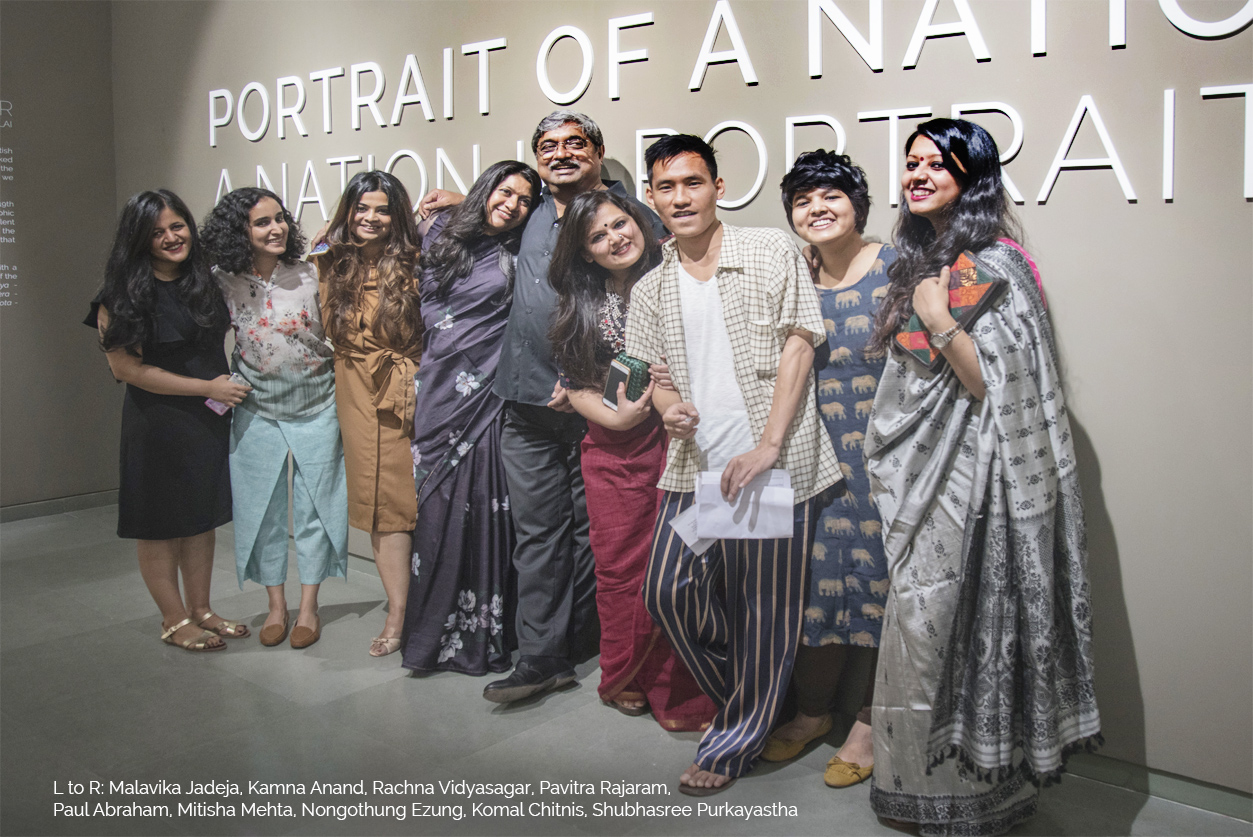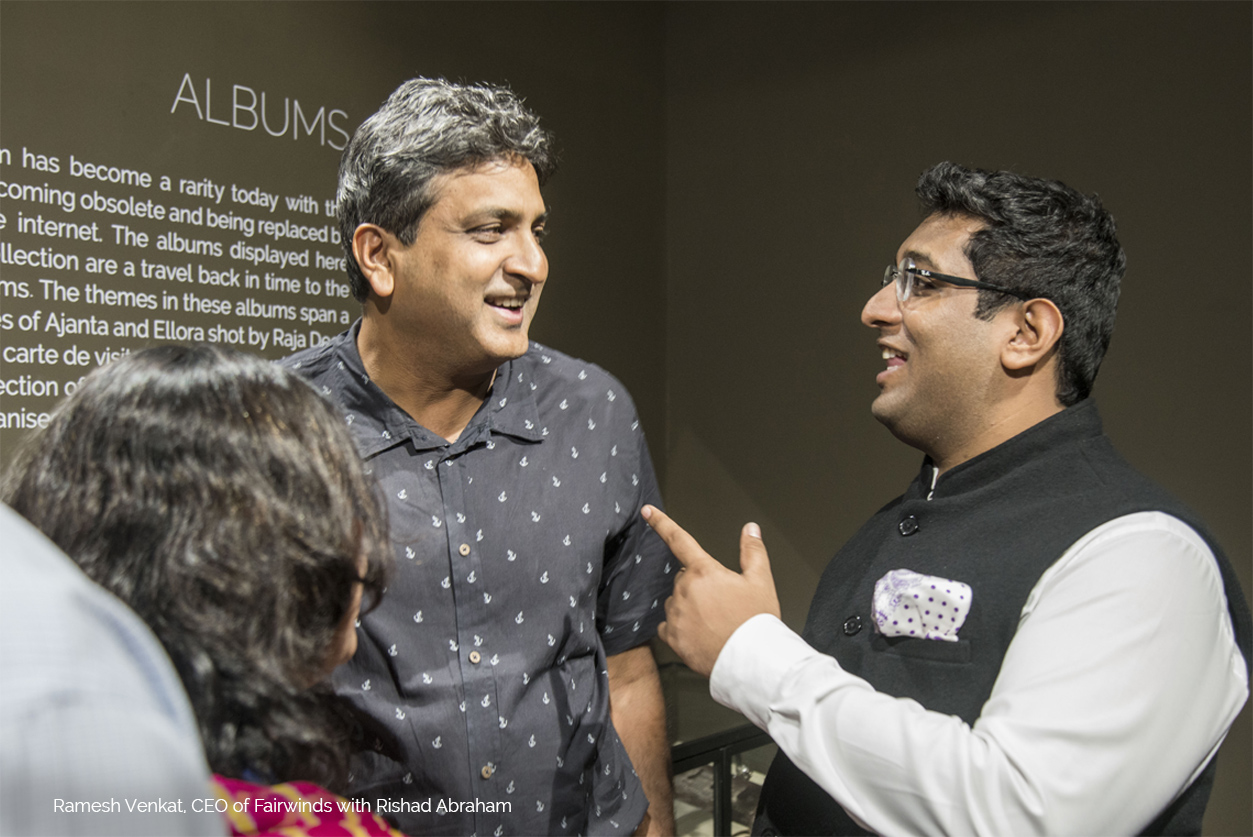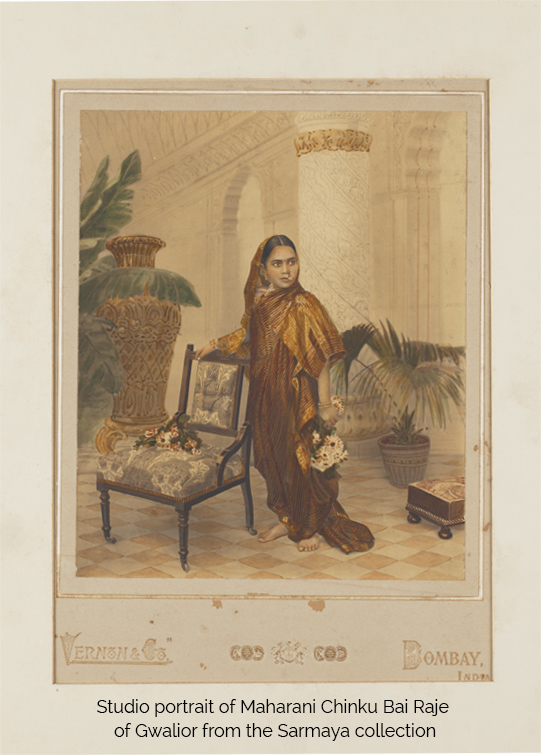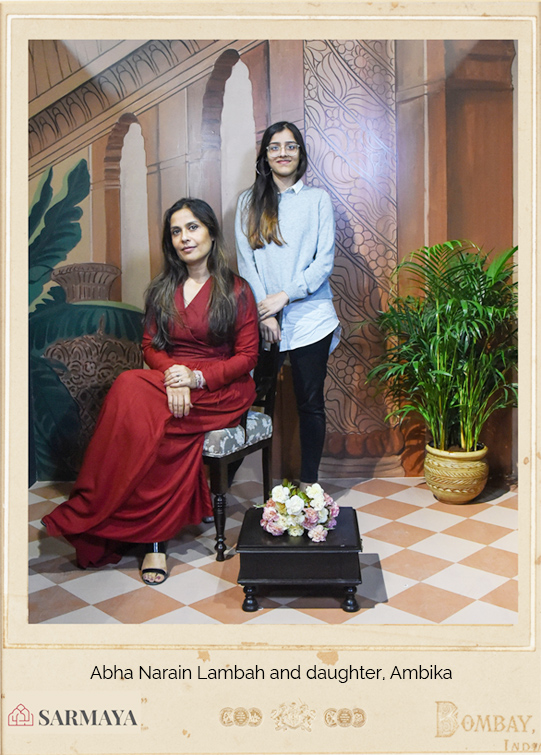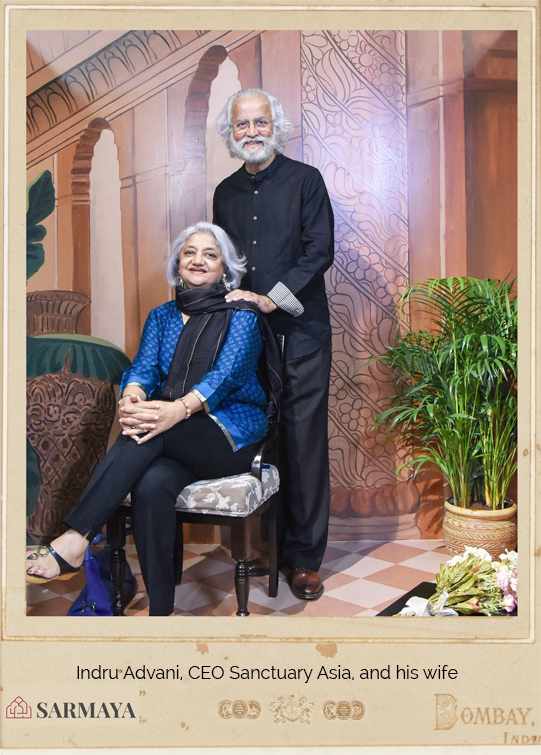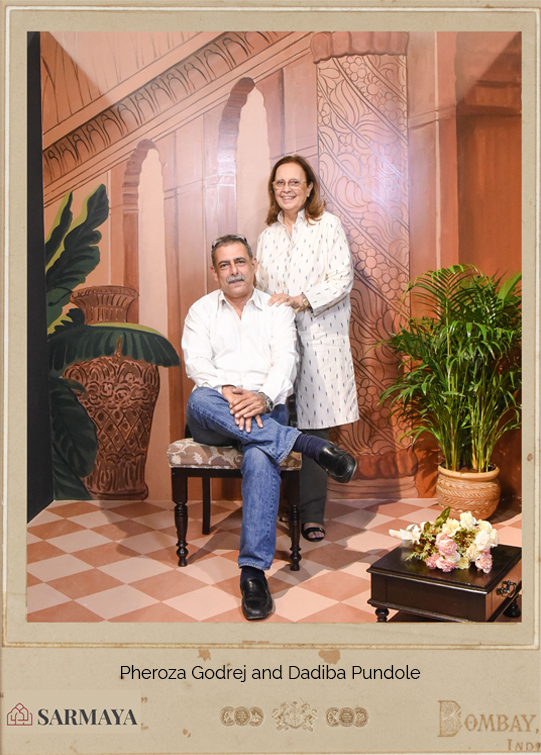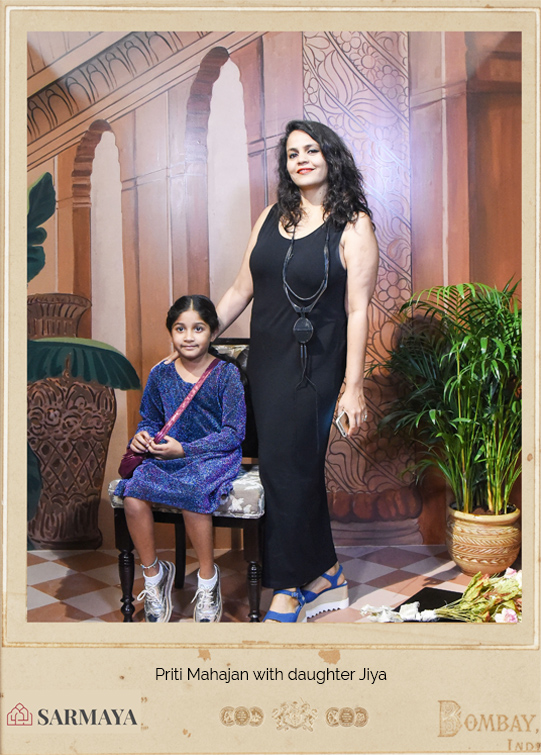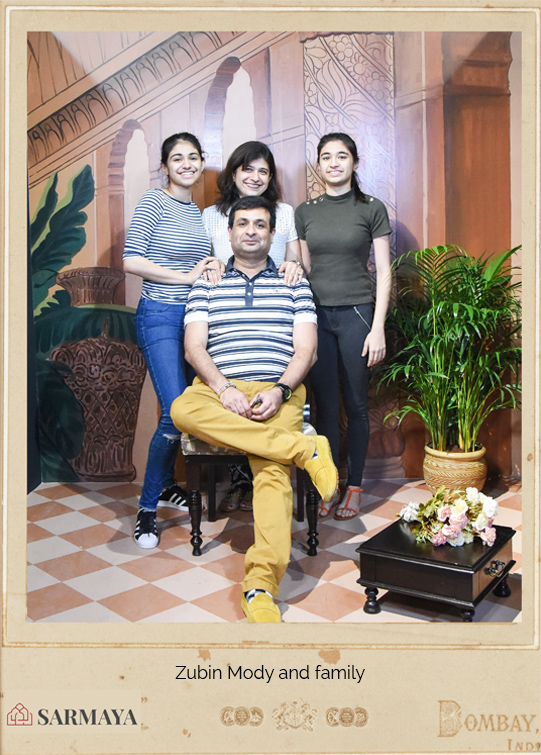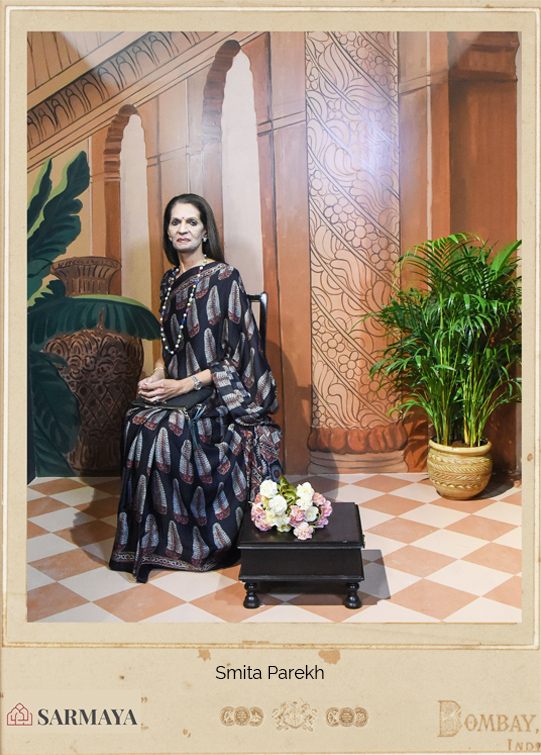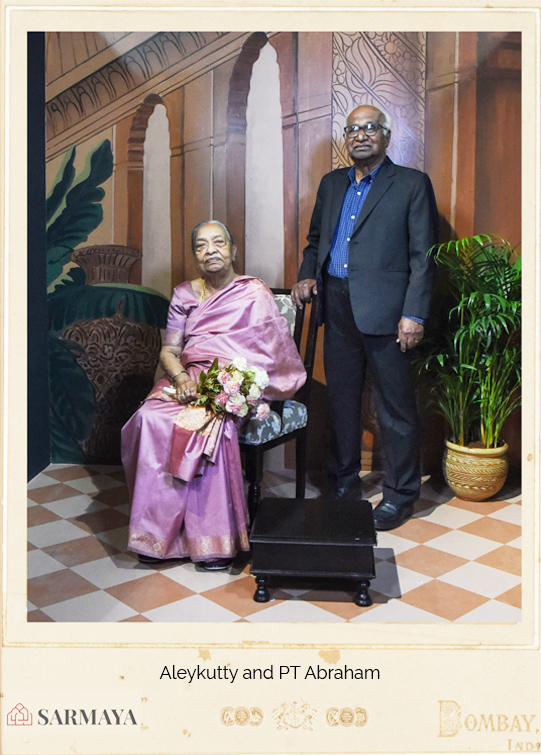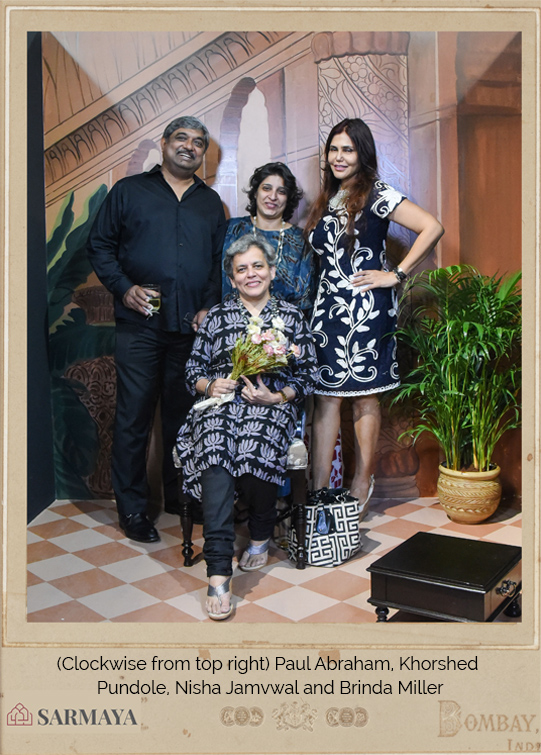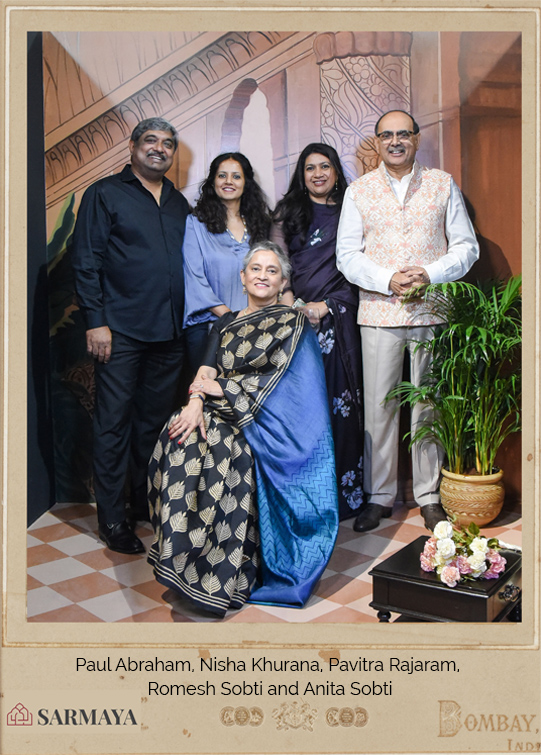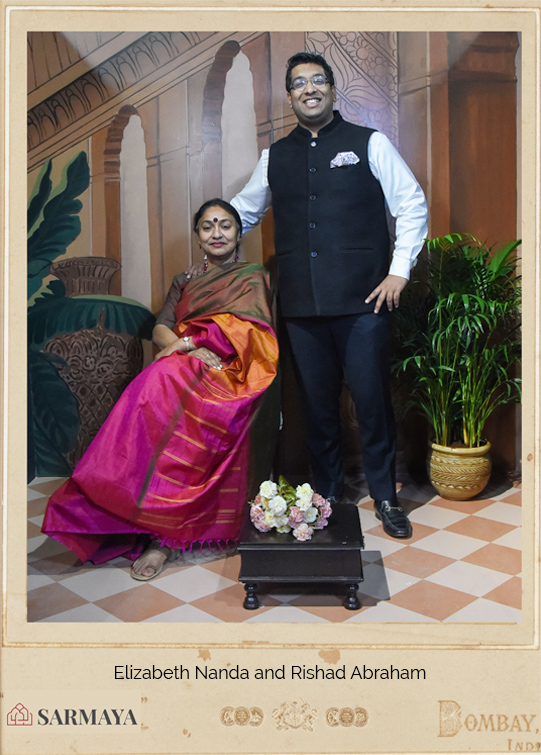Click here to take a virtual tour of our first exhibition
Our exhibition opened on January 24, 2018 at Pundole’s in Ballard Estate, Mumbai, and stayed on for a month. The timeframe of the photographs displayed started with the Uprising of 1857, the year that changed the history of this subcontinent, and traversed the period till the end of the 19th century. This allowed us to study such subjects as the art of photography, photographic processes, the history of portraiture, and the story of silent landscapes. We did this through workshops, walks and panel discussions, as well as through our interactive installations in the gallery.
Field view camera
These cameras were developed in America in the early 1800s, with internal bellows from the lens to the glass plate (controlled here by a wheel), a mechanism that allowed them to collapse for easy transportation. Most early cameras were made of wood, leather and brass, with minimal metallic parts.
Album displays
The Art of the Album is one of the casualties of the digital age. We let guests travel back in time through our display of old albums from the Sarmaya collection, which featured the caves of Ajanta and Ellora shot by Raja Deen Dayal, hundreds of Carte de Visite portraits of royalty, and a remarkable collection of cattle portraits from the ‘Cattle and Horse Show’ organised in Bombay in the late 1800s.
The Carte de Visite room
Carte de Visites, or photographic visiting cards, are today one of the largest surviving sub-categories of 19th-century photography. These were albumen printed photographs mounted on small 2.5”x3” cards. They were a great fad in Victorian England and gradually travelled to India. Our installation re-interpreted the idea of Carte de Visites by creating a mirrored parlour-like space crowded with the bobbing faces of Indian royalty and British aristocracy, shot by Bourne and Shepherd studio and Raja Deen Dayal.
Vintage puzzles
Before jigsaw puzzles caught on in their current avatar, they were made of wooden blocks and just like with Jenga, an entire evening’s work could come undone with a single sneeze! To keep visiting children engaged, we turned six interesting photographs from our collection into vintage puzzles that they could play with and assemble.
On the evening of February 23, we hosted a show opening for a very select guest list of Sarmaya friends and family. The exhibition was introduced by founder Paul Abraham, the show’s curator Madhavan Pillai and exhibition designer Abha Narain Lambah. During the evening, we also unveiled the Sarmaya brand video that sets out our vision and ambition for the months and years ahead. Over wine and hors devours, our guests took in the display of rare, 19th-century photographs. When they weren’t queuing up for their turn in the spotlight in the Sarmaya Booth, that is—more on that below!
#SARMAYABOOTH
To pay homage to the dying art of the vintage photo studio, we recreated a 19th century hand-coloured studio portrait setting at our exhibition—and it was one of our most popular attractions! The baroque background was based on an original, which was produced by the Bombay-based photo studio Vernon and Co., and had as its subject Maharani Chinku Bai Raje of Gwalior.
FEEDBACK WALL
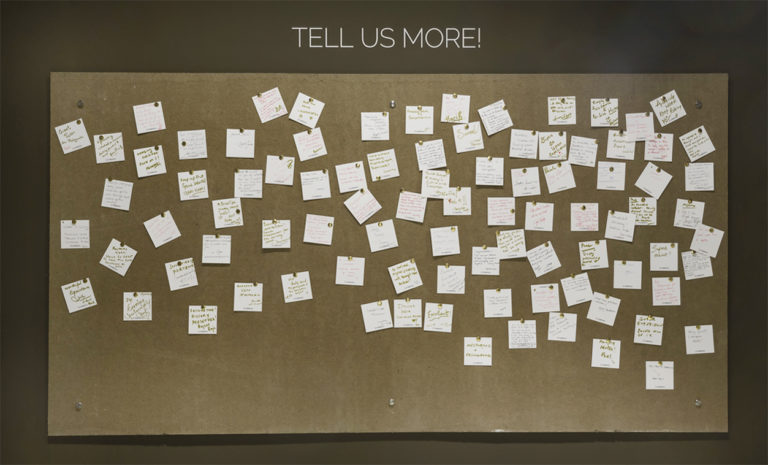



Nearly everyone left a sweet message for us on the 'Tell us more' board that was set up for feedback at our exhibition—from kids who loved the puzzles to professional conservationists who know the value of a good archive. Here’s just a small sampling of the notes we at Sarmaya treasure.

